



STATE OF OUR NATION 33 REUSE VS RENOVATE 30 THE SOLAR SOLUTION 44
MARCH 2023 | No 1168
At Keller, sustainability is at the heart of our strategy

As the leading specialist geotechnical contractor, we are committed to better understanding our contribution to sustainable development and are working to improve sustainability through innovative design and products.
We specialize in: Keller offers a comprehensive range of geotechnical and marine engineering services including both design and construction for the General Construction, Civil Engineering and Mining Industries. Call us today about your next project.
• Deep Foundations
• Grouting
• Earth Retention
• Near Shore Marine Works
Learn more about our sustainability commitment




011 062 7600 | info.za@keller.com | www.keller-africa.co.za
• Ground Improvement
the Foundations for a Sustainable Future
Building
South African Builder is the official journal of Master Builders South Africa, established in 1923. The opinions expressed by contributors are not necessarily those of Master Builders South Africa. SA Builder is a registered trademark of Master Builders South Africa. Any use of this trademark without the express and written approval of Master Builders South Africa is prohibited. No material contained herein may be reproduced in whole or in part without the prior written permission of the publisher. SA Builder © 2023. All rights reserved.

PUBLISHER
Isikhova Media (Pty) Ltd

10th Floor, Metal Box, 25 Owl Street, Milpark, Johannesburg, South Africa
Tel: +27 11 883 4627
www.sabuilder.co.za /www.isikhova.co.za
CONTRIBUTIONS
Master Builders South Africa
Tel: +27 11 205 9000
E-mail: editor@sabuilder.co.za
www.masterbuilders.org.za
Free download available on: www.sabuilder.co.za
Twitter: @Builders_SA | Facebook: @SouthAfricanBuilder
CONTENTS AND CREDITS
PROJECT MANAGEMENT
25 World-first collaboration empowers construction project management in SA
FEATURE
28 Digitising for an optimised, environmentally friendly grid
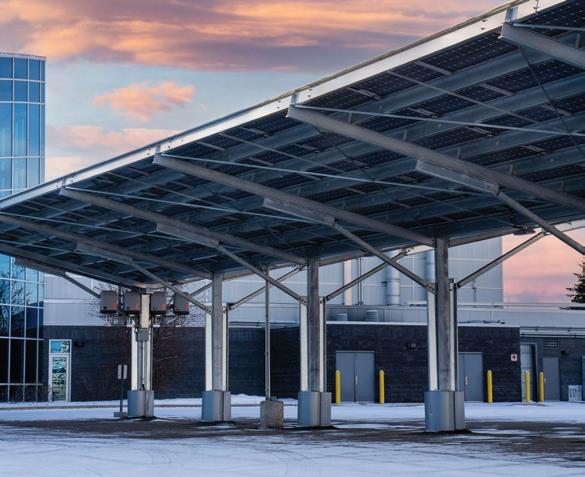
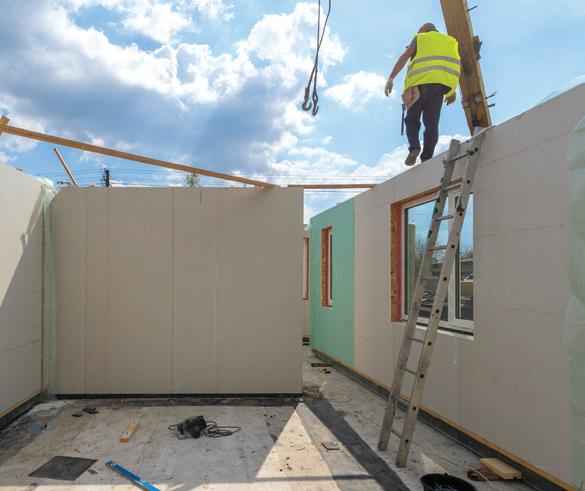

30 Re-usue vs renovation –new perspectives
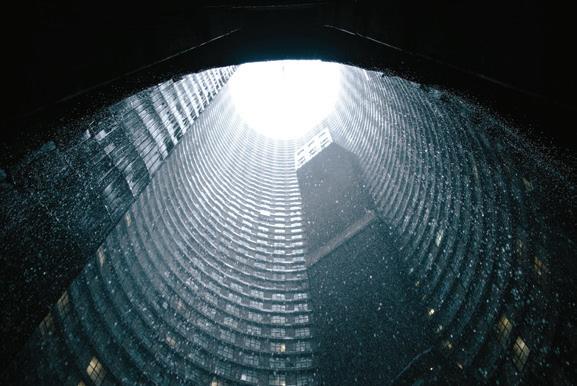
BUILDER'S VIEW
33 The state of our nation
PROJECTS
35 Parks Boulevard building marks 7-up for Concor at Oxford Parks
38 Two Hillbrow icons
QUICK-BUILD
44 Are contractors ready for increased solar demand?
GLOBAL VIEW
46 The invisible house that pops up everywhere
CAPTAINS OF CONSTRUCTION
47 Meet Sven Schutte
Editor: Nicholas McDiarmid
E-mail: nicholas@isikhova.co.za
Director: Jenny Justus
Tel: 083 450 6052
E-mail: jenny@isikhova.co.za
Managing director: Imraan Mahomed
E-mail: imraan@isikhova.co.za
Creative director: Joanne Brook
E-mail: joanne@isikhova.co.za
Proud Media Partner
Operations director: Thuli Majola
E-mail: thuli@isikhova.co.za
Copy editor: Anne Phillips
Advertising sales: Tel: +27 11 883 4627 Mobile: 072 383 3203/083 450 6052
savvy thinkers smart doers together people
MESSAGE FROM THE EDITOR 02 The state of building in our nation 02 MBA responds to SONA COVER STORY 04 All States Africa Concrete Equipment – ground-floor opportunity MBA NEWS 06 Material escalation: minimising adversity 10 Address of Sello Mokawane, president of MBA north 12 Raising the standard: roofing and waterproofing INDUSTRY NEWS 14 Raising the relevance of engineering professionals in SA 14 Consulting Engineers SA responds to the SONA 17 Prevention of heat-related illnesses 18 Cement substitution –composite revolution 20 Rocla and Technicrete supply concrete products 21 New SAWEA board to lead wind sector’s role in SA’s energy landscape 22 Get your energy performance certificates in order… now
MARCH 2023 SOUTH AFRICAN BUILDER 01
CONTENTS
06 12 38 44
THE STATE OF BUILDING IN OUR NATION
After the accounting exercise that was President Cyril Ramaphosa’s State of the Nation address on 9 February, we are left with many unanswered questions. Rather than a clear, concise plan for the short, medium and long term, or practical solutions to our politically caused energy crisis, we got palliative measures in the form of complicated ministerial portfolios and yet another new ministry headed by a highly paid Minister of Electricity. We also got a declaration of a state of emergency.
For many, the speech was far from reassuring.
So what should we be doing? Where possible, it is time to apply pressure and expand the conversation. Ideally, a crisis such as this one is also an opportunity to “build back better”. Smartening our grid and finding alternative technologies to load-draining
MBA RESPONDS TO SONA
Master Builders South Africa (MBSA) welcomes President Cyril Ramaphosa’s open and determined recognition of the core challenges facing South Africa today, as we push towards recovering an economy that works for all.
MBSA acknowledges the sound approach to addressing the energy crisis, which sustains the five key interventions identified in 2022:
1. Fix Eskom’s coal-fired power stations and improve the availability of existing supply.
2. Enable and accelerate private investment in generation capacity.
3. Accelerate procurement of new capacity from renewables, gas and battery storage.
appliances are strategies that have to form part of any energy solution.
Co-ordinating private-sector investment with a national energy plan is something that should have begun in earnest already. A full energy system approach has the potential to change the assumptions which currently constrain us by causing us to focus exclusively on power generation. What we need are creative consultation, engagement and the generation of as many options as possible to make our individual choices wiser and our collective choices smarter. While we all endure this periodic darkness, our solutions must be made in the light constructive engagement.
The way to protest our current situation is to force new and better conversations that integrate our current, personal energy investments into the smartest evolving solution possible.
Nicholas McDiarmid, Editor, SA Builder

4. Unleash businesses and households to invest in rooftop solar.
5. Fundamentally transform the electricity sector to achieve long-term energy security.
Seeking greater engagement with associations and organisations active in SA’s construction and infrastructure sectors is perhaps the most important of MBSA’s 2023 strategy. Likewise, we urge government to get the full advantage of engaging with us, and other strategic private-sector structures, to ensure optimal planning, consultation and co-ordination of the wealth of skills, knowledge and experience these represent.
Partnering across the public and private sectors now will shape our future profoundly and with the urgent need to solve the present crisis being such a shared and common goal, it may also yield an uncommon basis for co-operation and trust.
SOUTH AFRICAN BUILDER MARCH 2023 02 EDITOR'S NOTES

MODERN DESIGN. MADE THE OLD-FASHIONED WAY. At Swartland, we only know one way to make doors and windows, and that’s to last. Our Kenzo range is built from strong, lightweight aluminium-alloy frames allowing for expansive walls of light, space and seamless integration with nature. Kenzo windows and doors require very little maintenance and never need to be painted – the perfect combination of durability and affordability. All products are SANS 613 certified and compliant. Call us on 086 110 2425 or visit www.swartland.co.za for more info.
ALL STATES AFRICA CONCRETE EQUIPMENT–GROUND-FLOOR OPPORTUNITY
Expanding the range of opportunities for contractors is one of the most important undertakings in our current economy. All States Africa Concrete Equipment (ASACE) was established with this principle in mind and owner Sven Schutte has built the company from its early days as a small agency to the wellstocked responsive business it is today on that very idea.
Schutte’s own occupation as a specialist contractor in concrete finishes has imbued his work as the South African representative of All States Concrete Equipment, with an edge for realising quality for cost in the local market. The company’s impressive inventory of specialty concrete flooring
equipment is underpinned by a passion for realising financial, operational and practical solutions for every client, opening the door to a market once reserved for larger players and subcontractors.
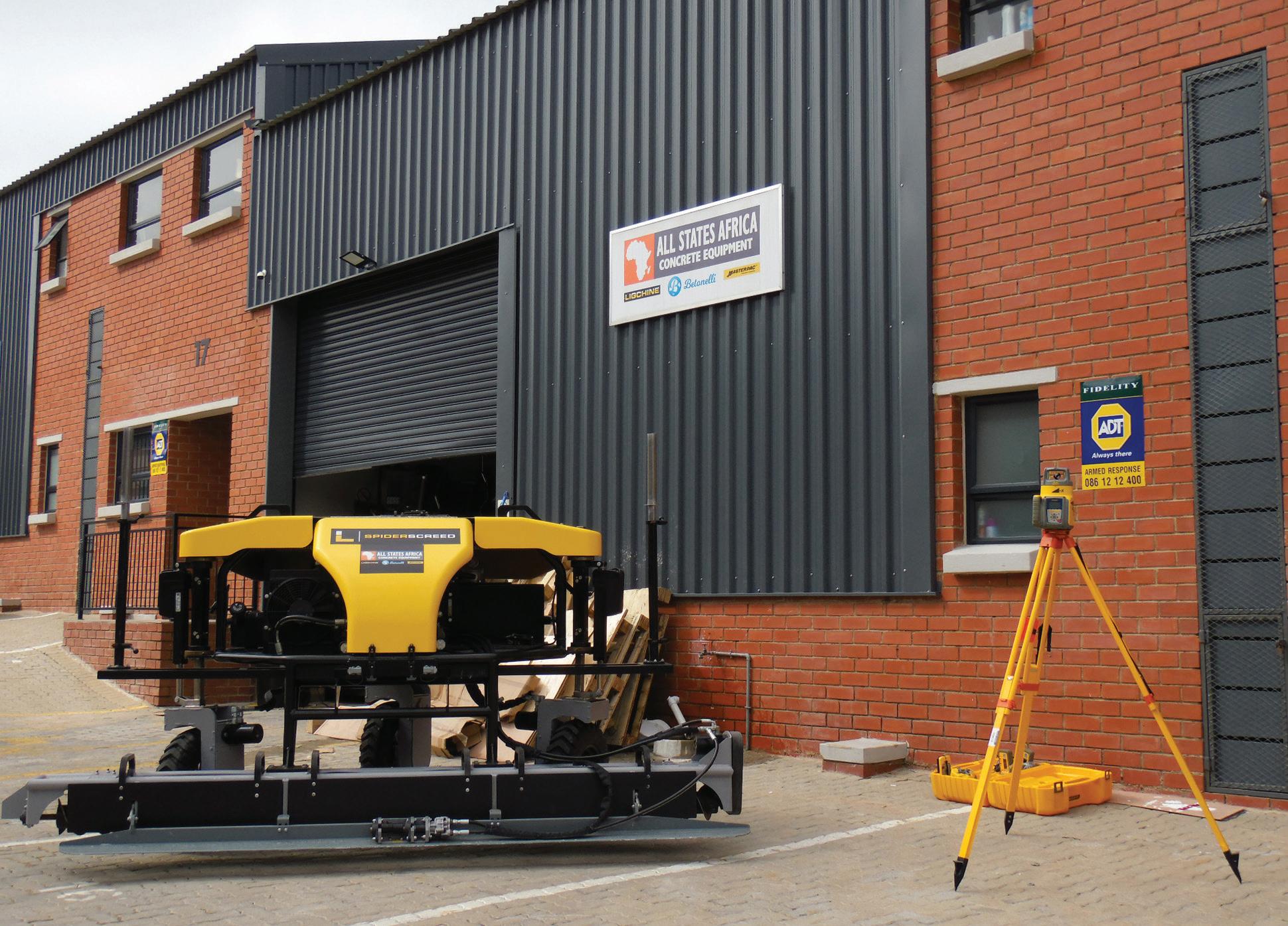
“All markets have their own peculiarities and South Africa may have more than some. In the concrete flooring and finishes segment, there’s definitely space in the market for specialist contractors with the granular knowledge and equipment needed for large projects,” he says.
ASACE’s warehouse is continuously stocked with leading global brands, including Ligchine’s range of boom and drive-in
screeds and Betonelli’s innovative power float technologies. The company’s offering of global brands are also fit for local market conditions. “To really benefit from these products in the South African market, it’s essential to be a true partner to our customers,” explains Schutte. “The first step is the most important one: making contact. From there, we work very steadily with our customers, understanding their businesses and goals and developing a solution that’s affordable and will give them not only the technical results, but the best shot for projects that may once have seemed out of reach.”

SOUTH AFRICAN BUILDER MARCH 2023 04 COVER STORY
(Left): All States Africa Concrete Equipment's warehouse is continuously stocked with the equipment you need to confidently deliver on today's opportunities.
(Above): These leading brands can be in your hands today, backed up by the training and service needed to keep your customers coming back.
FROM SPECIALTY CONTRACTORS TO CONSTRUCTION COMPANIES
With the right selection of tools and machinery, coupled with the knowledge and support of ASACE, contractors can develop specialty services at competitive rates and build the businesses on results and reputation.
The benefits of owning large screed and power float equipment include the ability to make a complete offering, ruling out the nuisance factors that sometimes develop between contractor and sub-contractor. With ASACE’s network of machinery and skills, the ability to take full control of projects is one step closer.

FLAWLESS FLOORS MINUS THE ISSUES
Schutte’s vision of concrete flooring is the right equipment, tools and focus at every step of the process. A perfectly level and flat floor with the required finish is well within reach.
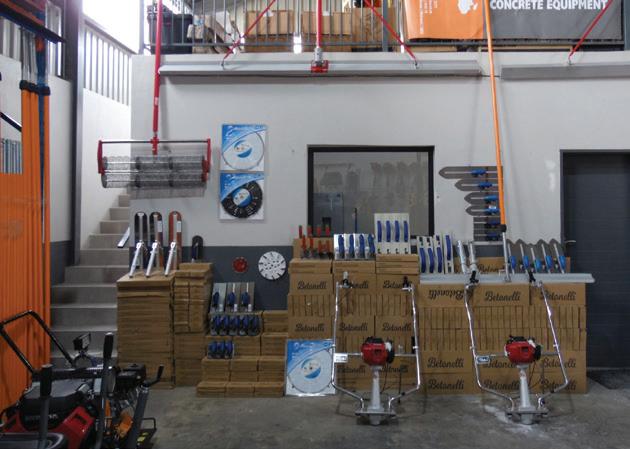
“A clear example of getting something right the first time is the difference between floor levelness and floor flatness. The expense and structural risks of grinding uneven floors or applying self-levelling screeds, resulting from focusing too much on floor levelness and not enough on flatness, is a prime example of unnecessary and complicated corrective work,” he explains.
RESULTS ARE POSSIBLE TODAY
The benefits of partnering with
ASACE are immediate. Having a single owner per project is a considerable time- and moneysaver. Having control over a budget, fully protected from the unforeseen, comes a very close second. The ability to get all the equipment on site at once frees the team to concentrate on the job at hand, while the on-site storage facility offers immediate convenience and peace of mind. Knowing that the cost of the consumables is limited to their use over a given month secures cash flow as well.
THE TRAINING YOU NEED AND THE SERVICE YOU DESERVE
Apart from equipment, ASACE offers a skilled technical engineering support team based in SA to provide hands-on training, led by its technical director with over 30 years’ hands-on experience in solutions for consistently achieving flat floors.
AN E-MAIL AWAY
Making contact with ASACE is about making the opportunity, not waiting for it.
It all starts here: sales@ allstatesafrica.co.za.
ASACE’S OFFERING
• One-stop, specialised concrete flooring consulting services.
• The appointed master dealers for USAmanufactured Ligchine laser screeds for Africa and the Middle East –the most preferred boomoperated machines – as well as for the company’s own Betonelli brand of finishing equipment.
• Carries the stock needed to act on opportunity in real time.
• On-site training in all catalogued equipment.
• Training modules in equipment repair and maintenance with a qualified team on standby.
MARCH 2023 SOUTH AFRICAN BUILDER 05 COVER STORY
(Above): From hand-held tools to big machines, ASACE opens the door to work once reserved for large companies and specialty contractors.
(Right): This Betonelli walk-behind machine represents the cutting edge in concrete flooring equipment globally and opportunities for resellers around SA and the continent are opening up regularly.
MATERIAL ESCALATION: MINIMISING ADVERSITY
By Bilaal Dawood, head of
Services, MBA KZN
In recent engagements with our members, it has been established that certain baskets of material prices have escalated drastically and have affected the profitability of projects. Statistics SA has reported that the prices of materials used in the local construction sector have increased by 13,2% year-on-year in February 2022 from an annual increase of 14,5% in January 2022.
In the current economic climate, adverse material price impacts are expected and contractors are advised to take steps to mitigate against them. The various factors affecting material prices include rising energy costs, transportation costs, supply and demand, the
crude oil price, exchange rates, import cost s, inflation and raw material costs.
STEPS THAT COULD HELP
Value engineering: The goal of value engineering is to provide the highest construction value at the lowest cost. Encourage the project team to hold a value engineering workshop at the start of the project through a study of alternative design concepts, materials and construction methods without compromising the functional and value objectives of your client.
Prefabrication: Explore the option of prefabrication. The results may show a lower cost to transport some parts from a manufacturing
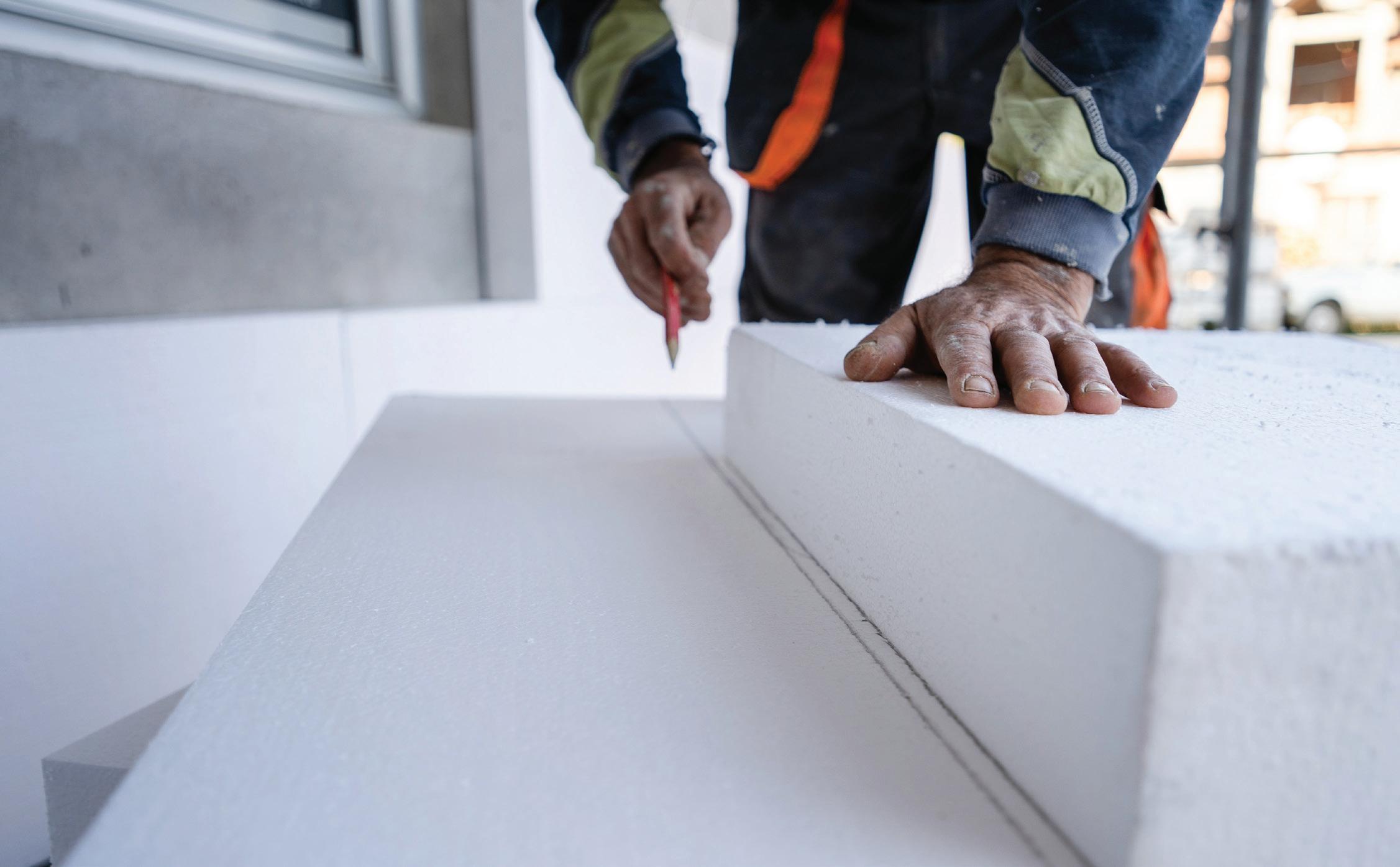
company than the outlay needed to manufacture from raw materials. An example is a prefabricated wall.
Material wastage: Material wastage contributes to the cost of sales on a project. Implement a lean construction model within the company or consider implementing a bill of materials to support the bill of quantities so that the correct quantities of material are purchased on a project.
Material alternatives: This is part of the value engineering chain. Explore material alternatives and remember to obtain approval from the client or the project manager
SOUTH AFRICAN BUILDER MARCH 2023 06 MBA NEWS
(Above): Alternative building materials can really keep costs down.
Membership
when implementing this, especially if the material proposed to be replaced has been included in the project specifications.


BUYING STRATEGY



Implement a buying strategy at the start of a project by buying volatile commodities early and planning ahead. Dealing with the purchase of materials in advance, as opposed to the last minute, allows
the contractor time to shop around and buy bulk materials needed for the project. This provides leverage to negotiate further discounts. However, it is cash flowdependent and the propensity of scope change on any particular project should also be taken into consideration.





















Consider negotiating a shared-risk contract strategy with regard to escalation – for example, a prime cost amount for unforeseen escalation which caps the client’s risk to the amount of that prime cost.


The contractor should also consider negotiating an advance payment on materials which could be used to purchase materials upfront, especially those which are susceptible to price volatility. Consider certain qualifications for quotes and/or contracts based on material price increases.





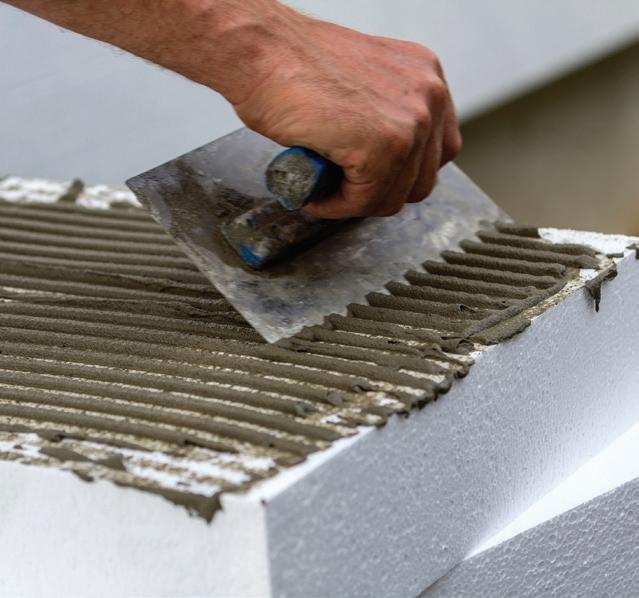
A proactive stance is required to deal with these aspects. Should you have any further queries in this regard, please contact MBA KZN.

SOUTH AFRICAN BUILDER MBA NEWS 07
(Above): Prefabricated components and structures can bring down overall costs significantly.
SOUTH AFRICAN BUILDER FEBRUARY 2022 QUALITY CONCRETE IN ABUNDANCE – ON SITE, ON TIME, EVERY TIME 04 LABOUR IN REMOTE SITES 28 DECARBONISING YOUR BUSINESS 36 FEBRUARY 2023 No 1167 Contact Ruwayda Mahomed to book your space 072 383 3203 / 011 883 4627 / ruwayda@isikhova.co.za
(Above): Precision choices are key to surviving the current surge in building prices.
Clay brick is proving to many sceptics in our built environment that sustainable construction is far from the rejection of the materials, methods and systems that have contributed so much to the world. Far from it: sustainability has underpinned research, studies, testing and innovation, revealing the many benefits of this ancient building material and driving its use in increasingly diverse and new ways.
Revitalised with a fresh perspective, clay brick is surprising both committed environmentalists and builders alike with new demand for its products coming from highly diverse markets. From off-grid living enthusiasts to commercial property developers, clay brick is hot property.
CLAY BRICK AT THE CUTTING EDGE
Johannesburg’s Sandton metropole concentrates the energy, wealth, power and diversity of Africa into a mighty, tight space. Forever transforming, its current developments are especially compelling, less for its new buildings than for the significance of what is happening to its older structures.
BlackBrick Sandton is a recently completed conversion which embodies the ethos of sustainability on a scale that integrates sustainability in just about every aspect of modern living. Its façade screams “visibility” – and clay brick was the sustainable solution, achieving far more than this aesthetic demand by bringing its unique mix of thermal properties, adaptive manufacturing
CLAY BRICK AT THE CUTTING
EDGE OF CUTTING CARBON
advantages and reliable, lowcarbon proximity of supply to this ambitious project. The manufacturer and supplier of the clay brick product is Federale Stene, a prominent member of the Clay Brick Association of Southern Africa.
FUTURE-FLEXIBLE, SUSTAINABLE STRUCTURES
Transforming old office blocks into a blend of comfortable living spaces, workspaces and community-fostering facilities is the leading trend for sustainable, mixed-use lifestyle developments. Designed on the “vertical village” concept, BlackBrick Sandton’s façade posed serious challenges in terms of both structural demands and those of a future-centric, sustainable vision.

As Mariana Lamont, executive director of the Clay Brick Association of Southern Africa, explains: “Sustainably designed buildings are energy- and resource-efficient and serve the long-term economic, social and environmental needs of
communities. Clay brick masonry demonstrates all these qualities during construction, throughout its long operational life.”
Not only are these bricks made from a highly durable natural material that offers an exceptional lifespan, but the clay from which it is made is also naturally insulating. “Clay bricks are thermal batteries, using energy from the sun to provide natural thermal efficiency, reducing the need for electricityguzzling air-conditioners, heaters and humidifiers,” adds Lamont.
BENEFITS OF BUILDING WITH CLAY BRICKS:
• Durable building material.
• Protection against major weather conditions.
• Aesthetically pleasing.
• Manage insulation well.
• Sustainable green building material.
• Low-maintenance.
• Made from natural raw materials.
• Energy-efficient.
• Low carbon footprint.
SOUTH AFRICAN BUILDER MARCH 2023 08 ASSOCIATION PARTNERS
WE ADD MUCH MORE
VALUE
Our specialists are standing by to assist you with design, specifications, detailed drawings, and certifications
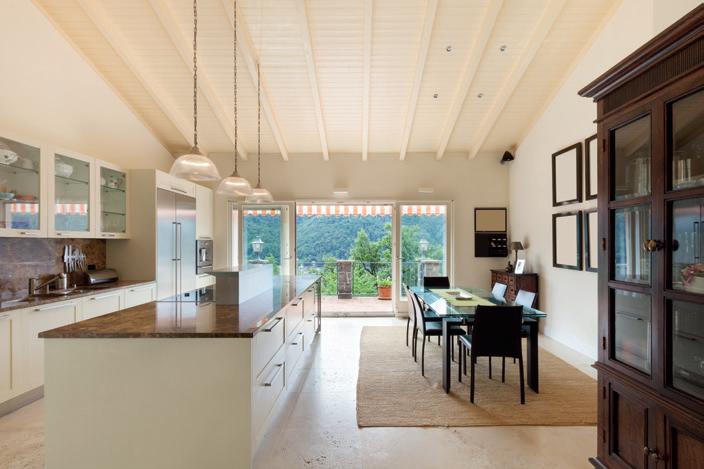

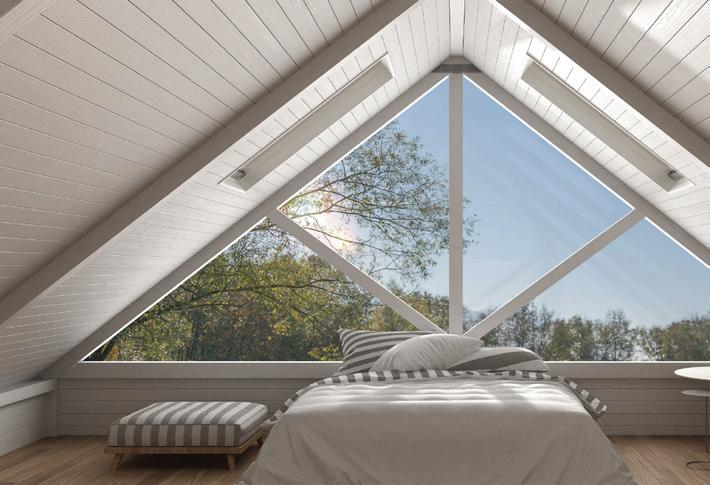


We’ll also do a rational design to help your plans comply with Sans 10400 XA. Our after-sales service extends to on-site, trade and technical assistance, from placing the order – to installation.








Call 086 110 2425 now. We’d be happy to assist with your next project.
www.summitxps.co.za
R-VALUES THAN JUST GOOD
“DR RAMOKGOPA WAS INVITED TO GIVE AN UPDATE ON THESE PROJECTS THREE YEARS LATER, WHEN HE INDICATED THAT THEY WERE STILL IN THE PLANNING PHASE.”
ADDRESS OF SELLO MOKAWANE, PRESIDENT OF MBA NORTH, ON THE STATE OF THE INDUSTRY

“Time flies, never to be recalled” wrote Virgil – and, true to his words, my first year as MBA North president has come and gone.
It followed 10 years of service on the MBA North Executive Committee and as an officer of the board, I am honoured to have been nominated.
I begin by thanking my colleague, past president Wayne Albertyn, for his sterling service. He stands out as the only president to lead the association through a worldwide
pandemic that resulted in the collapse of numerous established construction companies internationally and locally.
MAJOR CHALLENGES
The year under review is a clear indicator that the construction industry is not yet out of the woods. At the end of September 2022, Statistics SA published the growth rate for the sector as a -2,4% decline. This, coupled with delayed infrastructure projects and “business forums” disturbing sites
in some instances, as well as using violence and extortion, made for particularly challenging conditions in which to operate. President Cyril Ramaphosa again hosted one of his projects of investment summits at the Sandton Convention Centre in Johannesburg. Similarly, this year, various pledges for joint ventures between public and private sectors have been made, although their implementation has been very sluggish.

SOUTH AFRICAN BUILDER MARCH 2023 10 MBA NEWS
(Above): The 67 projects promised by government remain in planning phase.
PUBLIC-SECTOR PROJECTS

In 2020, the Minister of Public Works Patricia de Lille and newly-appointed government infrastructure development projects co-ordinator Dr Kgosientsho Ramokgopa launched an infrastructures Summit with the president in attendance. They presented 67 projects that were to be fast-tracked in partnership with the private sector.
Ramokgopa was invited to give an update on these projects three years later, when he indicated that they were still in the planning phase. Nevertheless, MBA North and MBSA remain positive and willing to help government break ground on these projects in the interests of the industry and our members.
As much as the association acknowledges and remains committed to alleviating the challenges facing main contractors, sub-contractors are also constrained. Therefore, in my remaining year as president, I will be extending the focus of the association to the challenges of sub-contractors, who are the implementers and deliverers of construction work on the ground, such as access to finance and guarantees.
TWO ICONS INSPIRING EMPOWERMENT AND TRANSFORMATION
Following the loss of two stalwarts in the industry – MBA North honorary member and past president Eunice Forbes and Dr Thandi Ndlovu, founding member and past president of SA Women in Construction (SAWIC) – the association will be prioritising the development, empowerment and inclusion of women, in line with



the broader BBBEE targets of the country. As an industry, we are still challenged by slow transformation when it comes to the inclusion and support of females.
In closing, I wish to thank the MBA North office-bearers, the staff under the leadership of executive director Mohau Mphomela and our loyal members, whom we are committed to continue serving in the coming year.
MARCH 2023 SOUTH AFRICAN BUILDER 11 MBA NEWS
(Above): Main contractors have well established representation and recognition, a focus on subcontractors is overdue.
(Far right): The industry lost two stalwarts – MBA North honorary member and past president Eunice Forbes and Dr Thandi Ndlovu, founding member and past president of SAWIC.
RAISING THE STANDARD: ROOFING AND WATERPROOFING
The launch of the BMI Coverland Roofing Academy has been welcomed by the Master Builders Association (MBA) North and the Professional Roof Repair & Waterproofing Association (PRAWA).
“We’ve been advocating the professionalisation of the roofing and waterproofing industry for some time. The launch of the BMI Coverland Roofing Academy is a very welcome development because it’s the first training provider where individuals can obtain an accredited National Certificate in Waterproofing,” says JJ Conradie, executive chairperson of the PRAWA. “We’re busy compiling the minimum standards in roofing and waterproofing, so this comes at just the right time.”
ESSENTIAL LINK IN CHAIN OF STANDARDS
Leonie Adams, training manager at the BMI Coverland Roofing Academy, says the importance of roofing cannot be overestimated. “If a roof collapses or leaks, it can cause enormous damage and even loss of life,” she says.
She adds that the academy offers a 12-month entry-level course, of which 70% is practical training, as well as courses for both skilled and semi-skilled workers within the construction industry who want to change careers. The National Certificate in Waterproofing is rated NQF Level 2 and is accredited by the Construction SETA.
SPOT THE DIFFERENCE
Adams points out that there is a distinction between approved waterproofing contractors, who have received training in a certain vendor’s products, and certified contractors, who have acquired the required level of all-round skills to be true roofing and waterproofing professionals. Roofing is highly specialised, making training to meet minimum standards essential to ensure that service providers are equipped to deliver the appropriate quality to customers.
The academy recognises prior learning, which can greatly reduce the time needed to obtain the certification.
The BMI Coverland Roofing Academy is situated in Roodepoort, with its headquarters at nearby JBC House.
TRAINING, SPONSORSHIPS AND CERTIFICATION
An exciting development is the launch of Pledge for a Learner to encourage players within the construction industry to sponsor the training of our people in roofing and waterproofing.
“SA’s population is set to reach 82 million by 2035, which means there’s a huge need for housing – and that includes good-quality roofing. This is a niche area of the industry that offers excellent career prospects, but it’s vital that new entrants have the requisite skills to ensure that the customers get the right quality and that the industry can grow sustainably,” says Adams.
“Certification is the cornerstone of any professional industry and soon only certified roofing and waterproofing contractors will be able to issue certificates of compliance,” adds Boitumelo Thipe at MBA North. “The Roofing Academy has a key role to play in helping this important component of our industry offer uniform high standards in line with the rest of the sector.”
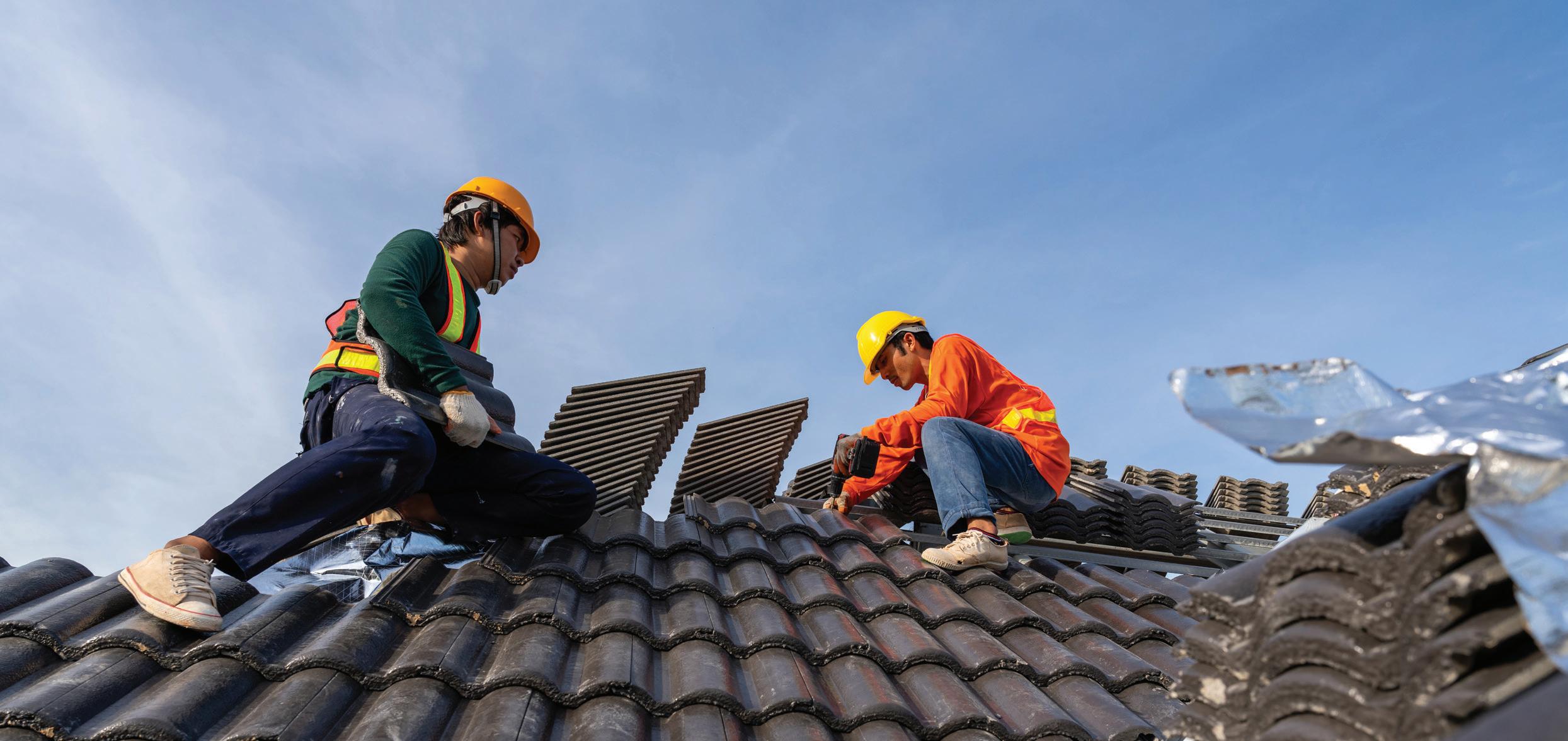
MBA NEWS
ROCK YOUR ROOF
Harvey Roofing Products is the market leader in steel roofing tiles and accessories, providing high-quality products and exceptional services. A division of the Macsteel Group, since its founding in 1967 it has evolved the most attractive and sturdy products to be found on the market.
CRUSHING ROCKS... AND THE COMPETITION
The crushed rocks that we use to coat our stone coat range will make a huge impact on appearance and longevity. With its superior ability to withstand harsh weather conditions such as the pelting sun, gale force winds, rain and hail, HarveyTile has you covered.
NEW PRODUCTS ON THE MARKET
The newly-launched Greystone and Midnight Black superior roof tiles feature a stone coating which is fade-resistant and durable, with a natural appearance that never needs painting. These ranges complement our flagship stone-coated product, Harvey Thatch Tile.
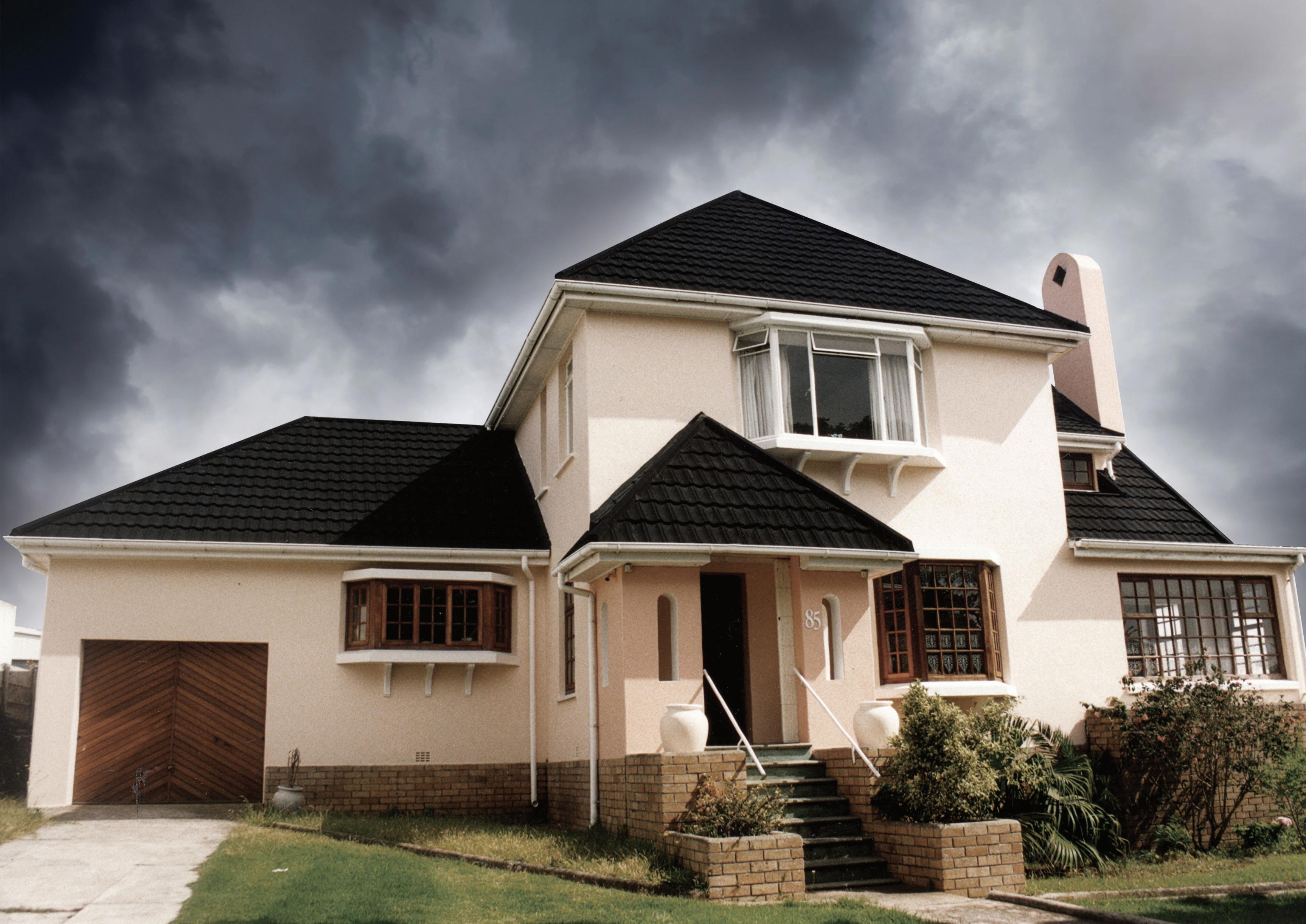
Elevating qualities over traditional roof tiles:
• Remarkable strength.
• Eye-catching aesthetics.
• Highly resistant to ultraviolet rays and extreme weather conditions.
• Minimal maintenance.
• Low lifetime cost.
• Weather-proof.
• 20-year warranty.
• Reroofing solution.
For a trustworthy, durable and well-established tile option, look no further than HarveyTile.
Beware of imitations – if it does not say Harvey Tile, it is not a Harvey Tile.
MARCH 2023 SOUTH AFRICAN BUILDER 13 ASSOCIATION PARTNERS
Harvey Roofing, tel: +27 11 741 5600. Email: info@hrp.co.za. Website: www.harveyroofingproducts.co.za
RAISING THE RELEVANCE OF ENGINEERING PROFESSIONALS IN SA
2023 is a year of opportunity for the SA Institution of Civil Engineering (SAICE) to actively raise the relevance or value of the engineering professional, as perceived in the public sector, as well as its own relevance as a thought leader in the infrastructure environment and a fair arbiter of infrastructure evaluation. The SAICE will encourage the public sector to regard it as the employer of choice for engineering professionals. These are the sentiments of the institution’s new president, Steven Kaplan.

For his presidential theme for 2023, Kaplan duly explains that his focus will be on showcasing the value and relevance of civil engineering professional –engineers, technologists and technicians – in the built environment.
“I’ve taken up the gauntlet to re-establish the value and relevance of the engineering professional in the public and private sectors. It’s in this country’s best interests for infrastructure development to be led by the experts – the engineering professionals responsible for the foresight and know-how regarding building infrastructure that will leave a positive legacy for generations in the future,” he says.
CONSULTING ENGINEERS SA RESPONDS TO THE SONA

In response to the State of the Nation address, Chris Campbell, CEO of Consulting Engineers SA (CESA), states: “We’re pleased to see that our voice is being heard, with the imminent finalisation of the public procurement bill to address weaknesses identified by the state aimed at improving efficiency, value for money and transparency in our procurement system.”
Campbell says CESA is pleased with the continued focus by government on professionalising the public service, which will be staffed by skilled, committed, ethical people critical to an effective state and ending corruption, patronage and wastage.

He cautions that while the undeniable priority is dealing with
macro infrastructure issues such as energy and water security, “we must simultaneously accelerate the pace of fixing our micro infrastructure delivery systems”.
Campbell believes that there is still much work to be done and in order to achieve this, collaboration is key, as we are united by a common purpose.
INDUSTRY NEWS
(Left): Steven Kaplan, 2023 SAICE president.






























A DIVISION OF
FOR GOOD Q FOREVER
Clay masonry is a natural insulator against summer heat, winter cold, humidity and noise. With timeless appeal, impressive strength and maximum fi re resistance, clay brick looks beautiful for a lifetime.
CBASA represents clay brick & paver manufacturers across Southern Africa. We drive inclusive, sustainable practices in the industry while supporting our local producers, builders and architects.

CLAYBRICK.ORG FOECIOVEHT T H E CLAYBRICKINDUSTRY STYLE SUSTAIN SAVE SECURE Download free technical & construction guides at www.claybrick.org
Conradie Park, Cape Town.Photo courtesy of Concor.
PREVENTION OF HEAT-RELATED ILLNESSES
By Neil Enslin, head: Occupational Health & Safety, MBA KZN
The hot and dry or humid weather conditions commonly found in KwaZulu-Natal can be dangerous for workers if they are not adequately prepared. Prolonged exposure to high temperatures increases the risk of developing heat-related illnesses such as sunburn, heat exhaustion, heat stroke or heat cramps. Symptoms can range from mild to severe and, in extreme cases, can result in death.

PREVENTION IS BETTER THAN CURE
A normal body temperature is 37°C. If it rises to 41°C, heat stress sets in. This is a life-threatening condition that requires prompt and competent treatment.
WHO IS SUSCEPTIBLE TO HEAT-RELATED ILLNESSES?
• New employees – it can take up to two months to acclimatise to the heat in a work environment.
• Older individuals, who tend to be less resilient and often
succumb to excessive heat exposure.
• Anybody exposed to excessive temperatures for an extended period.
• Persons under the influence of alcohol or experiencing the consequences of alcohol intake.
• Foreigners who are not used to the natural climate of the area.
• Anybody who is ill, or whose body has been weakened due to illness.
RECOGNISING THE SYMPTOMS OF HEAT DISORDERS

• Extreme fatigue.
• General weariness.
• Muscle weakness.
• Muscle cramps.
• Nausea and vomiting.
• Mental disturbance, argumentativeness.
• Failure to sweat – this is extremely serious.
TREATING THE SYMPTOMS OF HEAT DISORDERS
If a person displays one or more of the above symptoms, do the following:
• Move the individual to a cool, well-ventilated area.
• Attempt to reduce the core temperature of the body to below 39°C.
• Spray the victim with tepid water to simulate sweat.
• Increase air movement around the body.
• If the person’s temperature does not decrease to below 39°C within five or six minutes, seek emergency medical assistance. Remember, heat stress kills.
The most effective way of reducing core temperature is NOT to immerse the person in ice-cold water, but rather as described above. Ice-cold water could lead to shock, as the body further increases its temperature to counter the cold water. The aim should be to simulate sweating.
MANAGE WISELY
Working in hot weather is manageable if one is prepared for it. Dress appropriately, drink sufficient water, rest in cool, shaded areas and recognise signs of overheating.
MARCH 2023 SOUTH AFRICAN BUILDER 17 INDUSTRY NEWS
(Above): Preparation, sensitivity and caution can ensure continued operations with little or no risk.
As part of its three-decade sustainability journey, AfriSam has over the years championed the use of extenders to reduce clinker content in its composite cements. Through its Vanderbijlpark, Gauteng-based slagment operation, the company has pioneered the use of blast furnace slag, a by-product of the steel industry, to promote more sustainable products in the market.
The use of extenders in AfriSam’s composite cements has resulted in a substantial reduction in its clinker factor without compromising the quality of products. Blast furnace slag remains central to its efforts in this regard.
CLINKER SUBSTITUTION
Since 2008, the South African cement industry has seen a yearon-year reduction in emissions per ton of cement, largely driven by the increased focus on clinker substitution. According to the Association of Cementitious
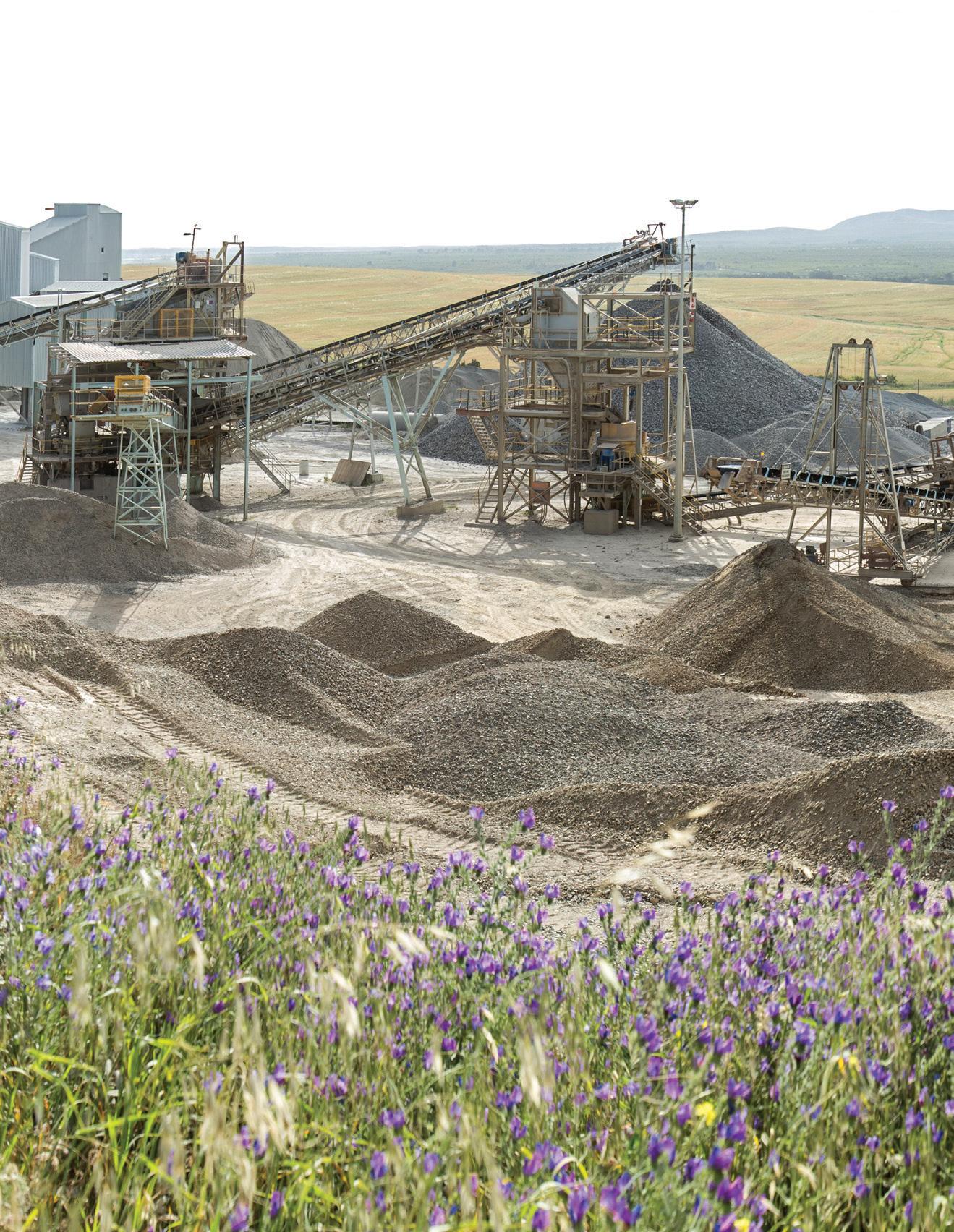
CEMENT SUBSTITUTION – COMPOSITE REVOLUTION
Material Producers, clinker substitution rose from 12% in 1990 to 23% in 2000 and a substantial 41% in 2009. The industry is pressing for a 60% rise by 2030.
Over the years, AfriSam has accelerated its efforts to substitute clinker through the development of composite (extended) cements. In 2000, it launched Project Green
Cement to increase the use of extenders to promote more sustainable products. The use of extenders, says Hannes Meyer, cementitious executive at AfriSam, has resulted in a substantial 20% reduction in the company’s clinker factor since 1990.
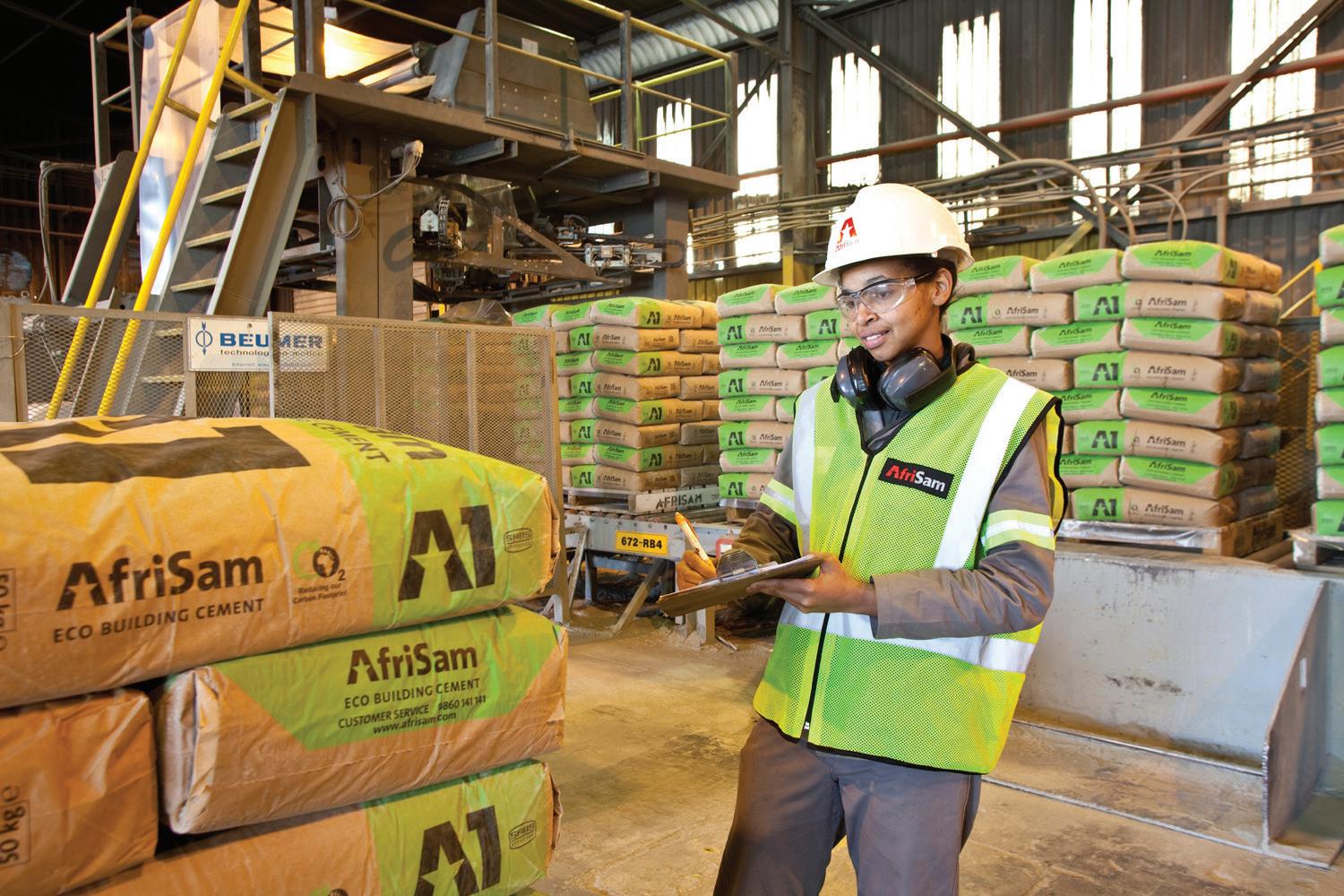
COMPOSITE OPTIONS
Composite cements, he explains, contain not only clinker, but other cementitious materials such as pulverised fly-ash from coalfired power stations and ground granulated blast-furnace slag (GGBS) from steel-making plants.
GGBS has been used in the manufacture of cements since the second half of the 19th century.
SOUTH AFRICAN BUILDER MARCH 2023 18 INDUSTRY NEWS
(Right): The company was the world’s first construction material supplier to carbon-footprint all its production operations, including cement, aggregate and ready-mix.
(Below): AfriSam has reduced its carbon emissions by 33% since 1990.
Back then, the practice was to intergrind the blast furnace slag with clinker. However, in the 1950s, AfriSam’s slagment operation pioneered the use of separately ground slag for the construction industry.
The use of this product has grown steadily in SA, with AfriSam among the front-runners. The company’s slagment operation plays a crucial role in the production of its composite cements. Established in 1955, the plant was previously owned by three companies, until AfriSam acquired 100% shares in it in 2004. The raw material is sourced from steel producer ArcelorMittal SA, which is strategically located a few metres away from the plant.









THE BRIGHTEST AND THE BEST Blast furnace slag has good cementitious properties, providing enhanced strength and durability. By evolving its chemical and mechanical activation
methods, AfriSam has achieved a more reactive product, allowing the company to progressively replace more and more clinker while retaining high cementitious quality and strength performance.


“Re-using waste products from other industries reduces the amount of limestone that we have to mine and clinker that we have to produce, thus reducing carbon emissions
from those processes, as well as minimising waste to landfill,” says Meyer. “We’re therefore constantly searching for new extenders and additives to further reduce our carbon footprint and our impact on the environment at large. The end result is less clinker produced per ton of each final product, resulting in less CO2 generated from our operations.”

MARCH 2023 SOUTH AFRICAN BUILDER 19 INDUSTRY NEWS
(Below): AfriSam’s slagment operation was established in 1955 and has supplied products to many flagship projects, such as the Gariep Dam.
PREVIOUS SA BUILDER MAGAZINE ISSUES ARE AVAILABLE ONLINE DID KNOW? 2022 No 1161 EB A G 9Y A B A G Y9 12 34 28 02 14 18 IS YOUR BUILDER A MASTER BUILDER? CLICK HERE TO VIEW BACK ISSUES YOU
(Left): Hannes Meyer, cementitious executive at AfriSam.
ROCLA AND TECHNICRETE SUPPLY CONCRETE PRODUCTS

FOR ROAD UPGRADES
The constant increase in the development of lifestyle estates and commercial office parks in areas which were previously open spaces puts increased pressure on existing infrastructure, creating challenging situations that require economically viable engineered solutions. Hazeldean Road, part of the Riverwalk Project near Pretoria East, is currently undergoing upgrades not only to reduce traffic congestion between the Blyde and Silver Lakes residential estates, but to improve stormwater and road infrastructure. Rocla and Technicrete were contracted to supply the supporting stormwater solutions.
“Rocla supplied 1 564 interlocking joint [IJ] pipes of varying sizes, while sister company Technicrete delivered nearly 7km of Figure 7 [semi-mountable] and Figure 10 kerbs,” says Lourens Swanepoel, site agent with Kwa Mhlanga Construction. Technicrete also supplied 3 500m² of Amorflex 180, a flexible heavy paver which is specifically suited for stormwater and drainage applications that were stipulated as a requirement for this project by the engineers.

Rocla’s IJ pipe is for use in stormwater applications. The male/ female-type joint is formed inside the wall of the pipe, which ensures no widening of it. This means that the outside dimensions of the pipe remain constant. The joint itself is used for centering the pipe during laying operations, making the process easier.
For the project, 730 x 450mm IJ pipes, 17 x 675mm IJ pipes, 280 x 750mm IJ pipes, 30 x 825mm IJ pipes, 122 x 900mm IJ pipes, 55 x 1 050mm IJ pipes and 330 x 1 350mm IJ pipes were supplied.
Armorflex 180, an internationally licensed product of Technicrete, is an articulating concrete block system specifically designed for stormwater management and ideally suited to the lining of trapezoidal channels. The Armorflex 180 blocks provide a loose, but sophisticated interlocking design, allowing the surface to remain flexible to movement without the cracking and spalling issues that occur with in-situ cast concrete when exposed to regular stormwater or flooding incidents causing layerwork subsidence.
Figure 7 kerbs from Technicrete are versatile precast ones generally used for edge restraint in the construction of roads, kerbs, gutter systems and rumble strips. Figure 10 kerbs are a light- to medium-
duty bull-nosed edge restraint normally used for pathways which could be accessed by vehicles in an emergency situation or those needing to be guided to remain on the paved paths.
Technicrete precast concrete product solutions have been installed in numerous projects around South Africa for over 50 years and offer a wide range of kerbing to meet any developmental requirement.
Swanepoel says he was impressed with the quality of the products from both Rocla and Technicrete. “It’s on that, after all, that their reputation rests,” he says.
20 INDUSTRY NEWS
IN SA’S ENERGY LANDSCAPE NEW SAWEA BOARD TO LEAD WIND SECTOR’S ROLE
The SA Wind Energy Association (SAWEA) has announced its new board of governance, following its 11th annual general meeting held in Cape Town on 27 January 2023. As the country accelerates its energy transition and pushes for energy security, those who hold positions on this board will be charged with steering and advocating for wind.

Dhesen Moodley has been elected as the new chairperson of SAWEA and previously served on the board for over a year. Having built a career in the finance and energy sector, he has a deep history in developing, financing and managing independent power projects with exposure to solar PV, CSP, coal, gas and mini-hydro assets. He currently leads a team of over 80 South Africans, managing a portfolio of six solar and two wind assets in which Globeleq is a majority shareholder.

“Although SAWEA has successfully advocated more wind in the country’s energy plan, we’re facing serious challenges. We need to work with government, key stakeholders and business to find solutions to the challenges, primarily hinged on grid access, so that new electricity can be injected into the network as soon as possible,” says Moodley.
“Wind technology is uniquely positioned to support energy security, as it provides cost-competitive generation during the evening peak demand hours and complements the growing fleet of utility, commercial and residential solar PV. It’s time to roll up our sleeves and chip away at loadshedding as a national initiative. The next few years won’t be easy.”
Three new board members, simultaneously voted in, include Nontokozo Nkosi, Titania StefanusZincke and Jose Rodrigues. They and Moodley join existing members Mercia Grimbeek and Mark Tanton.
Board members hold strategic leadership roles in their respective organisations and therefore bring immense experience to the wind energy sector, ensuring that the organisation is well positioned to provide leadership to the broader industry. The board represents a blend of developers, IPPs and OEMs, encompassing the critical role-players in the wind energy value chain.
SAWEA operates as a common-law, voluntary notfor-profit association that represents the SA wind industry. The board is primarily concerned with issues of governance and strategy.
INDUSTRY NEWS MARCH 2023 SOUTH AFRICAN BUILDER 21
(Above): Dhesen Moodley, SAWEA chairperson for 2023.
GET YOUR ENERGY PERFORMANCE CERTIFICATES IN ORDER…
The Department of Mineral Resources and Energy (DMRE) extended the 7 December 2022 deadline for the mandatory display and submission of energy performance certificates (EPCs) for buildings by three years, with only a fraction of non-residential buildings having already complied with the requirement. This gave building-owners some reprieve.
“The extension was welcomed by many industry bodies,” says Kagiso Mahlangu, director and head of real estate and conveyancing at corporate law firm CMS South Africa. “As the deadline drew closer, it became apparent that not many people had complied. There was a need to extend it because the intention wasn’t for a lot of building-owners to be fined or imprisoned for noncompliance.”
As the law is currently gazetted, those found not to be in compli -
ance face fines of up to R5 million or prison sentences of up to five years.
Mahlangu cautions that the extension should not, however, be seen as an opportunity for property-owners to keep kicking the can down the road. Instead, they should do everything in their power to get an EPC as soon as possible. Doing so not only puts them on the right side of the law when the deadline does come into play, but allows them to demonstrate to their tenants that they are making an active effort when it comes to promoting energy-efficiency. Remember, the built environment accounts for 40% of global emissions and 28% of energy consumption, making it a crucial sector for tackling the effects of climate change.
So what steps, exactly, should property-owners put in place when it comes to obtaining the certificates? And how can property practitioners help them?
UNDERSTANDING EPCS
Before exploring how nonresidential property-owners can ensure that they are properly certified, it is worth recapping what the certificates are designed to achieve and who is required to have them on display.
In essence, EPCs are designed to show anyone who looks at them how energy-efficient a building is in a way that is convenient and easy to understand. Anyone who has bought a new large appliance over the past few years will be familiar with the concept. The certification requirement applies to offices, entertainment facilities, educational institution buildings and places of public assembly such as indoor sporting facilities and community centres. Buildings also have to be more than two years old and have a net floor area

SOUTH AFRICAN BUILDER MARCH 2023 22 INDUSTRY NEWS
(Above): The work of upgrading existing buildings is still to be done, with most failing to have met the November 2022 deadline.
NOW
of over 1 000m² for government buildings and 2 000m² for privately owned buildings in order to be impacted by the certification requirement.
Administered by the SA National Energy Development Institute (Sanedi) on behalf of the department, EPCs grade buildings on how much energy they use per square metre. The gradings are on a scale from A-G, with A being the most efficient and G the least.
In order to obtain certification and grading, building-owners must gather information including annual electricity consumption, the net floor area, information on any areas to be excluded and vacancy rates. From there, the onus is on the owner to contract a SA National Accreditation System (SANAS)-accredited inspection body (IB) to audit the information. The IB will, in turn, submit the energy performance value to Sanedi, which inputs it into the National Building Energy Performance Register. From there, a unique number is generated for the EPC and sent back to the IB, which issues the EPC so that it can be displayed in the building.
GET THINGS IN ORDER NOW
As Mahlangu points out, part of the problem with compliance is the fact that the certification process is not a quick one. She therefore urges building-owners to get started on certification as a matter of urgency.
“It’s not a case of simply filling in a form and you’re done,” she says. “There’s information
that needs to be collated, collected and verified before the certificate’s actually issued.”
According to the CMS law firm director, even the fact that the extension was necessary shows that it is better to comply sooner rather than later.
“If the original deadline had stuck, many people would be facing severe penalties in the shape of fines or imprisonment,” she says.
but regard it as a chance to get in line with global building ownership and management standards.
“At the end of the day, these regulations are about ensuring that SA aligns with global practices,” she says. “For example, I was recently in France, where EPC grades are displayed on all property listings.”
While EPCs do not currently have to be included as a condition of sale or rental for building-owners, those with higher ratings will, inevitably, become more attractive, especially as concern for the planet becomes more universal.

“I think the whole intention for EPCs is great for the country and great for the environment,” says Mahlangu. “It will conscientise many owners about how they’re using their building energy and how best to make their buildings more efficient. We’ve got an energy crisis as a country and planet and there needs to be a shift sooner, rather than later.”
For this reason, she hopes that there will not be a further extension to the EPC deadline.
“We need to start ensuring that people are aware of the fact that the way we utilise energy in our buildings has a direct effect on our planet,” says Mahlangu.
GETTING IN LINE WITH GLOBAL STANDARDS
“When one considers greenhouse gas emissions for SA, buildings represent the major share of those emissions, making them lowhanging fruit when it comes to ensuring that the country meets its emission targets.”
MARCH 2023 SOUTH AFRICAN BUILDER 23 INDUSTRY NEWS
(Above): Energy Performance Certificates are designed to provide a visual reference to the building's energy consumption and status.
“AS THE LAW IS CURRENTLY GAZETTED, THOSE FOUND NOT TO BE IN COMPLIANCE FACE FINES OF UP TO R5 MILLION OR PRISON SENTENCES OF UP TO FIVE YEARS.”
Mahlangu points out that property-owners should not just view EPCs as a legal obligation,
PUT YOUR POWER INTO HANDS THAT YOU CAN TRUST
FIVE REASONS YOU CAN TRUST A MEMBER OF THE ELECTRICAL CONTRACTORS’ ASSOCIATION (SA)

ALL ECA MEMBERS:
Have the backing of South Africa’s most influential members’ association for electrical contractors.
Are duly registered with all relevant, prescribed statutory institutions, including the Department of Employment and Labour.
Pay levies to the National Bargaining Council for the Electrical Industry and pay staff according to the Wage Agreement, including providing social benefits such as pension and medical aid.
Work is guaranteed and backed by the ECA’s Workmanship Guarantee up to R20 000 (with terms and conditions).
Undertake all work according to all rules and regulations that ensure the consumer’s safety and are provided with continuous training at accredited centres.
National Office (011) 392-0000 info@ecasa.co.za
Pretoria (012) 342-3242 infopta@ecasa.co.za
Johannesburg (010) 271-0686 highveld@ecasa.co.za
Durban (031) 312-6313 ecakzn@ecasa.co.za
Cape Town (021) 462-2690 ecact@iafrica.com
Port Elizabeth (041) 363-1990 adminpe@ecasa.co.za
East London (043) 726-6359 adminel@ecasa.co.za
Bloemfontein (051) 447-0859 nita@ecasa.co.za
HELPDESK 087 944 4555 www.ecasa.co.za

ECA ELECTRICAL CONTRACTORS’ ASSOCIATION (SA) HOME OF YOUR TRUSTED ELECTRICAL CONTRACTORS Subscribe to SA Electrical Contractor magazine
WORLD-FIRST COLLABORATION EMPOWERS CONSTRUCTION PROJECT MANAGEMENT IN SA


In a world-first collaboration, the SA Council for the Project & Construction Management Professions (SACPCMP) and the Project Management Institute (PMI) have come together to offer construction-specific learning and development to those registered under the SACPCMP. The partnership will boost the international currency of South African construction professionals.
“This is the first time ever that a regulator has collaborated with the PMI to create an opportunity for its industry professionals to improve the global currency of their registration,” says SACPCMP registrar Butcher Matutle. “The collaboration between the two entities will open the door for
international recognition for SACPCMP registered persons, who’ll benefit from undertaking learning and development that’s not only constructionfocused, but also recognised internationally.”
The PMI has launched a suite of online courses and microcredentials to address the unique challenges faced by construction professionals. The courses aim to improve project management skills in the construction industry and lead to Construction Professional in Built Environment Projects (PMI-CP) certification.

WASTEFUL EXPENDITURE IN THE CONSTRUCTION SECTOR
“Annually, wasteful expenditure in the construction sector
globally amounts to $1,6 trillion,” says George Asamani, the PMI’s Sub-Saharan African MD. “These courses are designed to help construction professionals improve margins in the industry often plagued by cost overruns and project delays and are the PMI’s first industryspecific solution designed for construction professionals.”
The collaboration between the two entities supports the mandate of the SACPCMP, which seeks to support learning and continuing professional development in the construction sector. It is also a path for those registered under the council to engage in globally recognised learning that could enhance their international appeal as professionals.
MARCH 2023 SOUTH AFRICAN BUILDER 25
(Below): Focused construction project management is ideally a cocreative process, matching creating solution options with construction excellence, yielding much more than the superficial sum of its parts.
PROJECT MANAGEMENT
PROJECT MANAGEMENT
GLOBAL RECOGNITION FOR SA PROFESSIONALS

“We’re excited by the multilevelled benefits offered through this collaboration,” says Matutle. “SACPCMP professionals will be able to access this courseware at a preferential rate and continue to develop themselves in line with international best practices, while maintaining their registration requirements.”

He adds that SACPCMP applicants who need to develop their knowledge base to meet professional registration requirements will have the opportunity to do so through the collaboration. “Applicants can now select specific courses or modules that address pinpoint areas they may need to develop. The longterm benefit of this will not only be a fully competent construction industry, but the development of additional career pathways for the built environment.”
PMI-CP comprises seven courses, three of which offer microcredentials. Each course explores a specific area of construction project management. The certification was developed in collaboration with construction industry leaders and consultations with project managers who face the twin challenges of balancing technology and talent.
ADAPT TO THRIVE –TRANSFORMING SA CONSTRUCTION

“As with many sectors, the construction industry is seeing change. Adapting to change is key and demands different skills sets.
to complete projects successfully. The PMI believes that people and their skills are critical to improving project performance,” says Asamani. “This partnership between the SACPCMP and the PMI, with each partner striving for excellence in their respective specialties, will create a solid platform for the construction industry to deliver better outcomes.”
SA is no stranger to the difficulties facing the construction industry. However, to meet the demand for R812,5 billion worth of planned infrastructure projects over the next three years, proactive steps must be taken.
“If the SA construction industry is to leverage the massive infrastructure opportunity, it must accelerate the upskilling of construction professionals. The
SOUTH AFRICAN BUILDER MARCH 2023 26
(Above): More complex projects can benefit from a project team working from the client side and another on the construction side.
(Above): SACPCMP registrar Butcher Matutle (left) and the PMI’s Sub-Saharan African MD George Asamani signing the collaboration agreement at the SACPCMP offices in Gauteng.
PMI is positioned to equip the sector with the competencies needed and, through the collaboration with the SACPCMP, we’ve built a platform to ensure that the industry’s strengthened by professionals who can adequately address the complex nature presented by the construction sector,” says Matutle.
The agreement was officially signed by Asamani, the SACPCMP’s president Isaac Nkosi and Matutle in Gauteng on 14 November 2022. Tunde OjoAromokudu, president of the PMI SA Chapter, was also present at the signing. The agreement will facilitate access for SACPCMP registered professionals and applicants to the PMI’s CP courses and certification at a reduced rate. Course credits will be recognised by the council in various ways.
PMI SA is one of the oldest PMI Chapters in Africa and was established in 2001.
course explores a specific area of construction project management, such as communication and risk management. The courses are:
ABOUT
THE PMI-CP CERTIFICATION
PMI’s Construction Professional in Built Environment Projects (CP) certification courses can be taken in any order and present an opportunity for professionals to focus on topics they are most driven to explore. Students can either complete individual courses and earn specific microcredentials or complete all courses in preparation for the capstone exam. Three of the seven courses offer micro-credentials upon completion of a post-course exam. The micro-credentials award a digital badge to show the user’s mastery of the content. Each
Built Environment Project Communication Pro

Scope and Change Order Management in the Built Environment
Interface Management in the Built Environment
Built Environment Performance and Materials Management Pro
Contract and Risk Management in the Built Environment
Built Environment Technology and Innovation Pro
Execution Planning in the Built Environment

MARCH 2023 SOUTH AFRICAN BUILDER 27 PROJECT MANAGEMENT
“IF THE SA CONSTRUCTION INDUSTRY IS TO LEVERAGE THE MASSIVE INFRASTRUCTURE OPPORTUNITY, IT MUST ACCELERATE THE UPSKILLING OF CONSTRUCTION PROFESSIONALS.”
(Above): Integrated technologies have had a profound impact on construction management overall, unlocking silos and communicating changes in minutes, rather than days.
(Above): From materials to methods; from service providers to building services – a high-functioning project team shares thinking across disciplines.
DIGITISING FOR AN OPTIMISED,
ENVIRONMENTALLY FRIENDLY GRID
By Vladimir Milovanovic, vicepresident, Power Systems and Energy Management Business:

Schneider Electric
The ripple effect of South Africa’s load-shedding is well publicised, impacting the entire user life-cycle, from large conglomerates to our own homes. Sadly, loadshedding has the potential to impact not only the productivity and income of consumers, but also the very system that provides us with power.
Equipment kept in sub-stations and distribution centres, new or old, is not designed to withstand an onslaught of surges, continued
interruptions and on/off switching multiple times a day.
One example is medium voltage (MV) switchgear that has been designed, in optimal circumstances, to last up to 40 years. However, as mentioned, no equipment can handle the extraordinary circumstances that come with load-shedding, which means that switchgear and other equipment simply stops working well before its projected end of life.
In the case of gas-insulated switchgear, the way SF6 is collected and recycled at its end of life is a major priority. Furthermore, with pure air-insulated switchgear now becoming available, there is a compelling case for replacing faulty equipment with SF6-free options.
SF6-free MV switchgear is a viable choice not only for


SOUTH AFRICAN BUILDER MARCH 2023 28 FEATURE
“VOLTAGE CONTROL IS TRADITIONALLY PERFORMED BY TRANSFORMERS USING ON-LOAD TAP CHANGERS AND CAPACITOR BANKS THAT INJECT REACTIVE POWER INTO THE GRID AT THE MV SUB-STATION LEVEL.”
(Above): Testing by a qualified electrical engineer is vital.
(Below): Operator safety is the first concern of matching one's choice of equipment with the scale involved.
the environment, but also for operational safety. Additionally, it offers ease of maintenance, end-of-life treatment, functionality and performance, as well as environmental compliance.
Pure air switchgear is natively connectable, which means that new equipment can be added with minimum disruption. SF6free switchgear is also designed in such a way that it does not require operator retraining, thus mitigating downtime. And, importantly, if there is a gas leak, the pure air will simply escape into the atmosphere, causing no environmental impact.
MAINTAINING A STABLE GRID
One of the main responsibilities of utilities is to maintain voltage limits to ensure safe, stable and optimised usage. Voltage control is traditionally performed by transformers using on-load tap changers and capacitor banks that inject reactive power into the grid at the MV sub-station level.

The grid operator then fixes a set point and prepares scenarios and ranges based on seasonal load curves, as an example.
However, as we add more distributed energy resources to the grid, effective energy mix management becomes critical. It is paramount – as renewable resources are added – that this is managed intelligently, keeping a close eye on, for example, loads during peak and off-peak times. This will enable management of a stable grid comprised of fossil and renewable energy resources.
Several new digital solutions can be deployed to address this challenge:
Next-generation remote terminal units allow users to remotely control the sub-station and to accurately track operating parameters to ensure stable operations during load-shedding, for example.
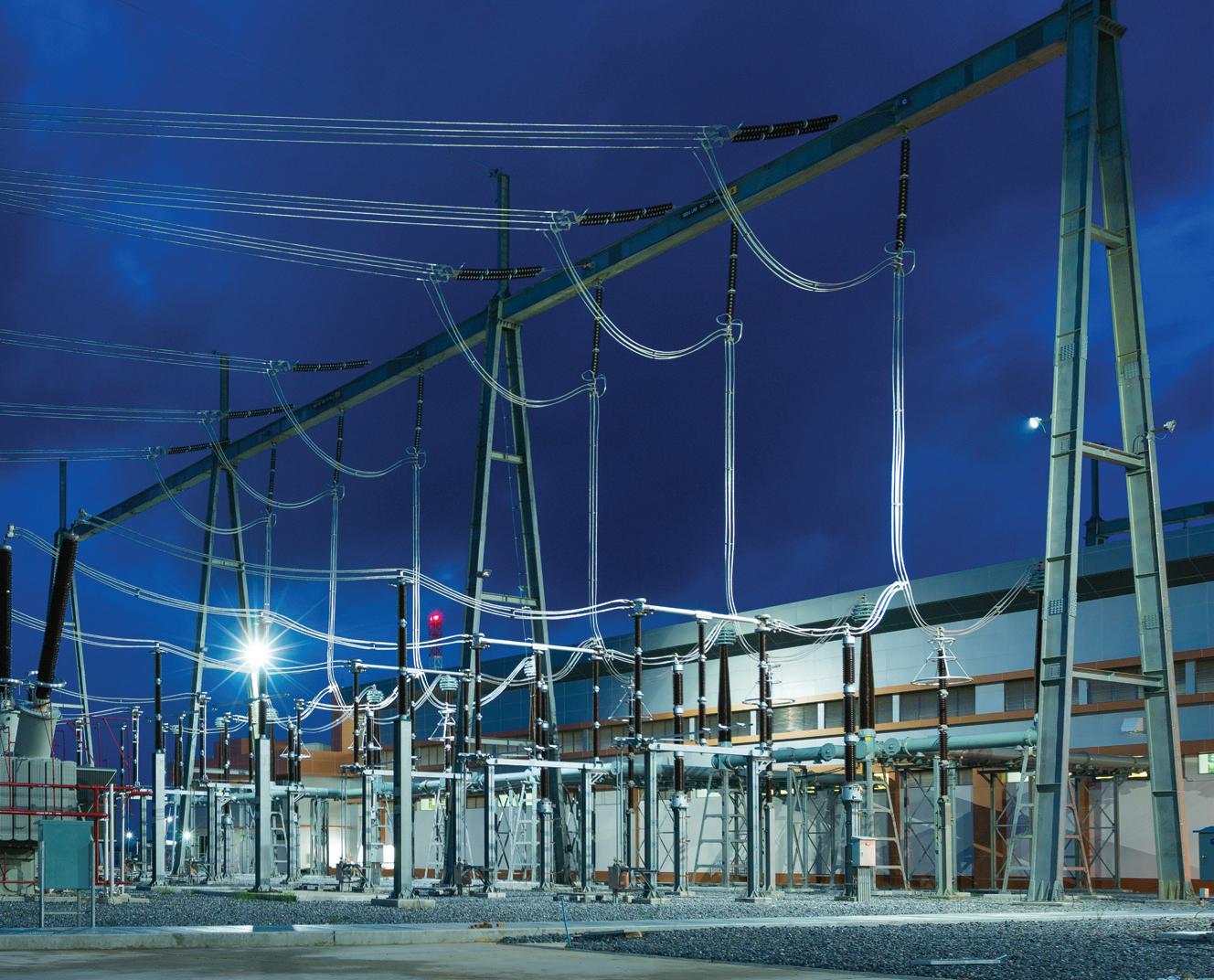
New smart sensors can easily be installed on new and existing switchgear and can be connected to the cloud or on-premise
systems, as required. They allow for predictive maintenance and endof-life management, which are key in reducing long-term costs.
Digital twin environments allow for virtual modelling of networks, providing insights into equipment performance within the set parameters.
SF6-FREE AND DIGITAL TECHNOLOGIES –A POWERFUL FORCE
Modern, digital technology allows us to untangle the complexity of modern electricity networks and the increasing levels of renewables and DERs coming into the fold.
Coupled with connected SF6-free switchgear, we are one step closer to finding a sustainable solution to the impact of greenhouse gas emissions on the environment.
MARCH 2023 SOUTH AFRICAN BUILDER 29 FEATURE
(Left): A typical industrial installation.
(Below): High-voltage sub-stations benefit from a variety of switchgear innovations.
RE-USE VS RENOVATION – NEW PERSPECTIVES
By Emily Newton
Land is a limited resource, but demand for construction keeps rising. That situation, paired with the push for greater sustainability, presents a challenge – but the answer may lie in buildings that already exist. With adaptive re-use, construction firms can create new spaces without building an entirely new structure.
WHAT IS ADAPTIVE RE-USE?
Adaptive re-use, also called architectural re-use or building reuse, is the practice of repurposing an old building for a new use. Unlike conventional renovation, it does not refresh a property so it can keep serving its current
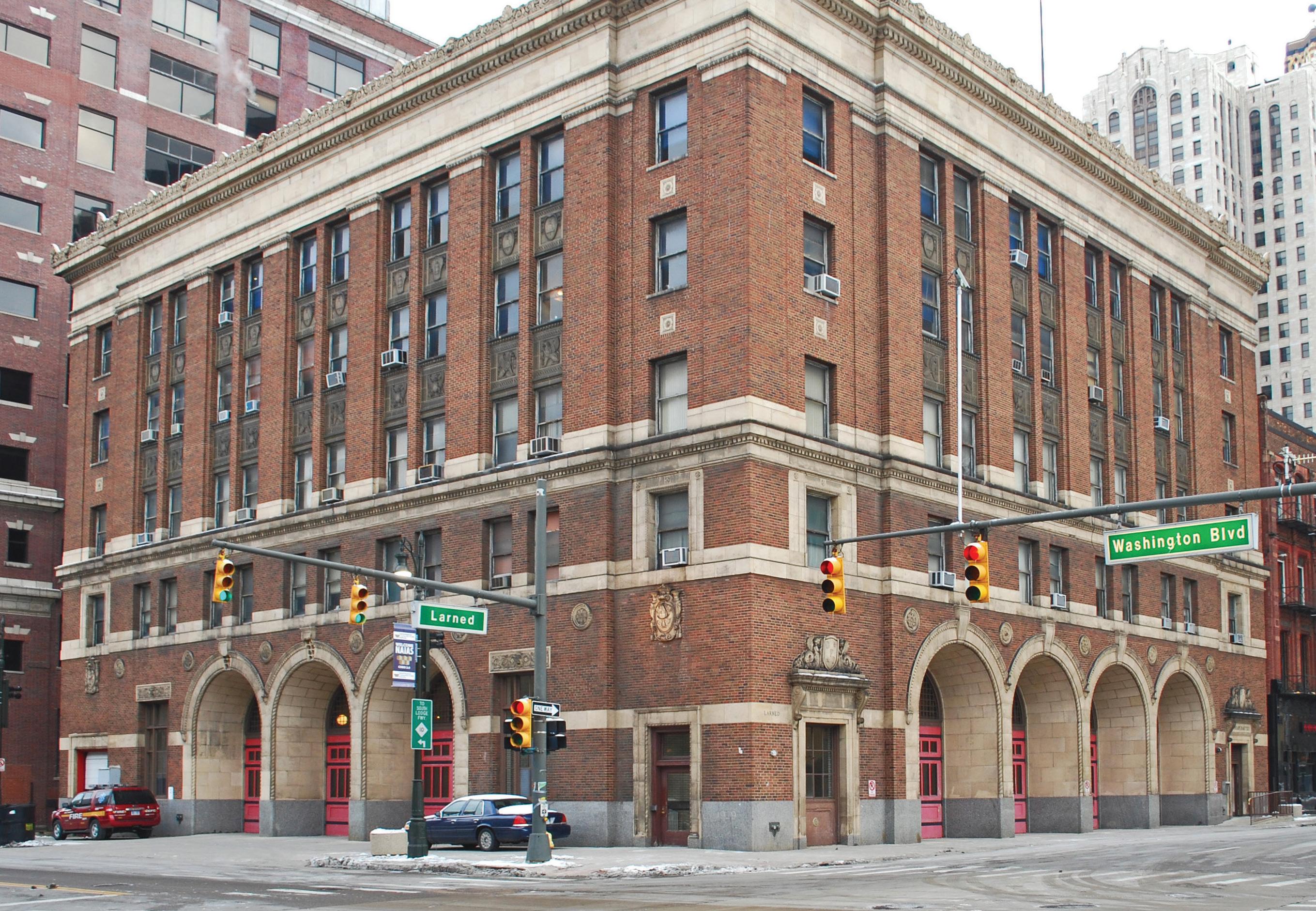
or old role. Instead, it gives buildings a different purpose, essentially creating a new property without complete demolition or construction from scratch
The US government owns an estimated 45 000 under-utilised buildings and many more commercial properties sit abandoned, taking up city lots without contributing to the economy. This vast availability of unused, ageing structures provides ample opportunity to minimise waste and urban sprawl while simultaneously meeting a city’s current infrastructure needs.
Old churches can become restaurants, abandoned industrial complexes can become low-
income housing and historic government buildings can become museums. By re-imagining these structures, construction firms can address multiple problems facing America’s infrastructure in a single project.
BENEFITS OF ADAPTIVE RE-USE
The most direct benefit of adaptive re-use for construction companies is that it is costeffective. It often takes less time and money to renovate an existing space than to design and construct a new one of the same size. That is particularly helpful for firms facing significant backlogs after recent demand spikes.
SOUTH AFRICAN BUILDER MARCH 2023 30 FEATURE
(Above): The original Detroit Fire Department.
This approach to architecture is also far more environmentally friendly than building from scratch. Because these projects take less time, fossil fuel-powered heavy equipment runs less frequently and emits less greenhouse gas. With much of the structure already existing, firms also add minimal embodied carbon to the property and avoiding demolition creates less waste.
Re-using existing architecture also reduces urban sprawl, as it provides new space for businesses without taking up new lots. Bring -
ing historic buildings back to life can also preserve the community’s heritage and improve an area’s aesthetics, improving spirits and the quality of life in the area.
TYPES OF ADAPTIVE RE-USE
There are many different types of adaptive re-use, too. This variety of approaches further expands the possibilities of what construction firms can do with old buildings. Here are five of the most exciting and beneficial of these strategies:

1. Renovation
The most familiar type of adaptive re-use for most professionals is renovation. In this approach, construction teams repair, rebuild or refurnish much of the inside of a building, but leave the exterior largely unchanged.
It is important to note that renovation in this context differs from the conventional sense of the word. Instead of refurbishing a property to make it better for the same purpose, it does so to give it a new use.
An excellent example is the Detroit Foundation Hotel, which repurposed the original headquarters for the Detroit Fire Department.
While the exterior still looks like an old fire station, the inside is almost entirely new, featuring more modern amenities and restructured layouts to accommodate the new business. Not all renovation projects are so dramatic, but adaptive renovations are typically more involved than simple refurbishment.
2. Historic preservation
Historic preservation is a similar, but distinct approach to adaptive re-use. In these projects, the primary goal is to preserve or restore the building’s history. Like renovation, it often deals more with the interior than the exterior, but it keeps much of the original interior’s aesthetic and integrity.
Changes in this type of re-use often include upgrades to meet current building codes. As green building becomes an increasingly important trend, some projects also implement more energyefficient infrastructure to help historic properties reduce their carbon footprints.
This approach is ideal for museums, as the building itself can become an art or history installation. Even though the property serves a different purpose now, it holds onto its roots to preserve its community significance.
3. Façadism
If an old building is in particularly poor repair or has little historical significance, firms may opt for façadism. This type of adaptive
MARCH 2023 SOUTH AFRICAN BUILDER 31 FEATURE
(Above): Repurposed and better than new, the magnificent façade of the Detroit Foundation Hotel.
“BRINGING HISTORIC BUILDINGS BACK TO LIFE CAN ALSO PRESERVE THE COMMUNITY’S HERITAGE AND IMPROVE AN AREA’S AESTHETICS, IMPROVING SPIRITS AND THE QUALITY OF LIFE IN THE AREA.”
FEATURE
re-use demolishes and rebuilds most of the structure, while keeping the street-facing side intact.
Keeping the façade while changing the rest of the building is a more involved, but practical approach to architectural re-use. Some teams may find it easier to integrate modern systems into a new structure than install them via minimally invasive fixes.
4. Integration
Most approaches to re-use focus on internal changes to historic buildings while preserving their exterior. Integration takes a more dramatic direction by leaving the entire original structure in place while building new infrastructure around it.
The Union of Romanian Architects Building in Bucharest is a great example. When the union sought to convert the old secret police headquarters into its own office, it could not demolish it because of its protected historical status. Instead of changing the structure, it added a modern office space on top of it, giving it new life while preserving the entire original building.

5. Infrastructure adaptive re-use
Adaptive re-use can revive structures apart from buildings, too. Infrastructure re-use takes outdated or crumbling infrastructure like highways, railroads or industrial plants and turns it into new public works like parks.

The High Line in New York City is one of the most famous examples. The site used to be an elevated railway, but fell into disrepair after rising truck usage
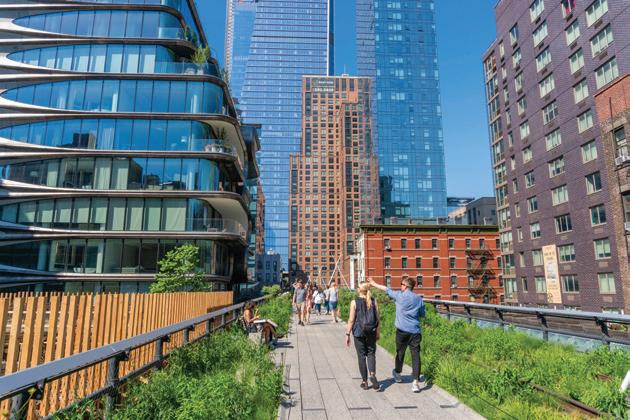
rendered the rail unnecessary. In the early 2000s, architects turned it into a park with walking tracks, viewing balconies and an openair market, letting the structure serve the community again.
With so much ageing infrastructure in the USA, this type of re-use is an increasingly attractive option. It also provides needed green spaces or safe community gathering points without clearing existing lots.
MAKE THE MOST OF A BUILDING BY RE-USING OLD ARCHITECTURE
Old buildings do not have to fall into under-use and new ones do not need to involve extensive demolition or urban sprawl. Adaptive re-use lets construction firms join the past and present to preserve architectural history, while meeting the future’s needs. Leaning into this trend will also help the sector become more cost-effective and sustainable.
ABOUT THE AUTHOR: Emily Newton is the editor-in-chief of Revolutionized, an online magazine celebrating innovations in the industrial sector.
SOUTH AFRICAN BUILDER MARCH 2023 32
(Above): Integration is less common than some other methods because it can be complicated and only works if the original structure is still in relatively good condition.
(Above): The Train Yards, New York City, found new purpose as a much-needed greenway (inset).
THE STATE OF OUR NATION
By Nicholas McDiarmid, editor
In many increasing ways, the momentum of nation-building and economic growth takes place despite our politics. On 9 February, President Cyril Ramaphosa chose a deeply impersonal approach in delivering his State of the Nation Address (SONA ), as if to distance himself from the very challenges politics has created.

We know that there are no shortcuts, especially at foundation level. So as we assess what we are being told, it is vital that we channel our inevitable frustration into a viable path forward, bearing in mind that working together always yields infinitely more value than retreating into a defensive stance.
THE GOOD AND THE BAD
“What we’ve achieved as a nation over the past year, despite our challenges, reminds us that the promise of South Africa is alive,” began Ramaphosa. “Today our economy’s larger than it was before the pandemic.” These things are true – though not thanks to government, but in spite of it. Think of all those performing artists whose designated relief funds never reached their bank accounts. Think of all the privatesector high-risk investments that created those jobs. These accomplishments are decidedly ours, not the state’s.
“Our country has, for many months, endured a debilitating electricity shortage that’s caused immense damage to our economy,” lamented Ramaphosa.
The point is not to allocate blame; that is well enough understood. The point is to take very seriously what we – South African citizens, organisations and companies –continuously achieve, despite the many odds.
WHAT IS THE PLAN?
“We’re not presenting new plans, nor are we outlining here the full programme of government. Rather, we’re concentrating on those issues that concern South Africans the most: load-shedding, unemployment, poverty and the rising cost of living, as well as crime and corruption. Our most immediate priority is to restore energy security,” said Ramaphosa.
While it was good to hear these admissions, we must remain cautious of their function. Graft is so entrenched that it can seem pointless to even address the power crisis without first addressing the crisis of those in power.
The official plan outlined five key interventions:
1. Fix Eskom’s coal-fired power stations and improve the availability of existing supply.
2. Enable and accelerate private investment in generation capacity.
3. Accelerate procurement of new capacity from renewables, gas and battery storage.
4. Unleash businesses and households to invest in rooftop solar.
5. Fundamentally transform the electricity sector to achieve long-term energy security.
THE REGULATOR, THE REALITY AND YOU
One of the most powerful actions our sector can take right now is to empower existing alliances, create new ones and fast-track the results from working groups tasked with
BUILDER'S VIEW
MARCH 2023 SOUTH AFRICAN BUILDER 33
BUILDER'S VIEW
optimising the skills, technologies, financial instruments and market opportunities to expedite the utilisation of 21st-century technology. The 2023 SONA ignored the very interventions spelt out in our much-vaunted Just Transition Plan presented last year by then Eskom CEO André de Ruyter.
WE DO HAVE POWER
It is a coincidence that our urgent need to tackle carbon emissions dovetails so exquisitely with the socalled Fourth Industrial Revolution. We are no longer constrained by yesterday’s electricity supply chain. The technologies to create, optimise, distribute and manage a variety of grid-types, while feeding into a national grid, need the involvement of all primary sectors, including the financial one. Supporting the co-ordination of builders, bankers, designers and engineers is surely the best way to open the doors of opportunity for every South African. Which is not to say that none of this has been done already – it is merely to say that the context has changed radically over the past six months.
A MIXED RESPONSE
Reaction to the 2023 SONA from the construction sector has been mixed. In its statement, the SA Institution of Civil Engineering remains concerned about public-sector accountability. “We understand that there is no easy fix for government to improve the country’s economy and infrastructure status. We need to increase the investment in infrastructure from 13,7% of GDP in 2020 to at least 30% by 2030. We need to reduce habitual
underspending of infrastructure budgets by those public-service providers who are not held accountable, [resulting in] service delivery failures, poor governance, weak institutional capacity and instability,” it stated.
The Engineering Council of SA has offered to give as much assistance as required by deploying engineers to work with the management teams at power stations. “We have deep skills and expertise right here in SA – we just need to use them,” it noted.
Action Plan and look to the new minister to drive new-generation capacity onto the grid with haste,” stated Niveshen Govender, the association’s CEO.

Rein Snoeck Henkemans, a key player and expert in the residential and commercial solar sector, was hopeful that a pragmatic response in support of broadening access to ready solutions was on the cards. “The inescapable fact of the matter is that we need a working solution today, not in a couple of years from now. We’ve experienced close to 1 000 hours of load-shedding this year alone. If this trend continues, it’s impossible to know or even guess how much it will cost the average person or business-owner in the long term,” he said.
The SA Wind Energy Association was more upbeat in its response. “This isn’t the first time that our president has prioritised SA’s protracted energy shortfall in his SONA , resulting in significant reform which has helped to liberalise the energy sector. We once again hope that the changes proposed will accelerate the implementation of the Energy
However, Snoeck Henkemans did find one remark in the SONA heartening. “The address gave us at least one flickering ray of hope. The president promised to implement a tax incentive for solar, which may prove to be a sizable step in the right direction. Currently, we have no information on the conditions or extent of the incentive, but if this proves to be substantial enough, we could enter a golden age for solar which would significantly benefit business and households,” he said.

SOUTH AFRICAN BUILDER MARCH 2023 34
(Above): The current power crisis contains the seeds of a better, more integrated and sustainable power mix.
PARKS BOULEVARD BUILDING MARKS 7-UP FOR CONCOR AT OXFORD PARKS
Concor continues to notch up successes at the Oxford Parks precinct, where it has been making rapid progress on 5 Parks Boulevard since July. This is the seventh building that the company will have built in this popular mixeduse development and it is being constructed to a high Green Star rating. Contributing to this rating will be environmentally responsible bulk concrete with a low CO2 footprint supplied by AfriSam.

MARCH 2023 SOUTH AFRICAN BUILDER 35 PROJECTS
(Below): The office block will comprise four basement levels and five office levels.
“THIS BUILDING IS DESIGNED TO ACHIEVE A HIGH GREEN STAR RATING BY THE GREEN BUILDINGS COUNCIL SA.”
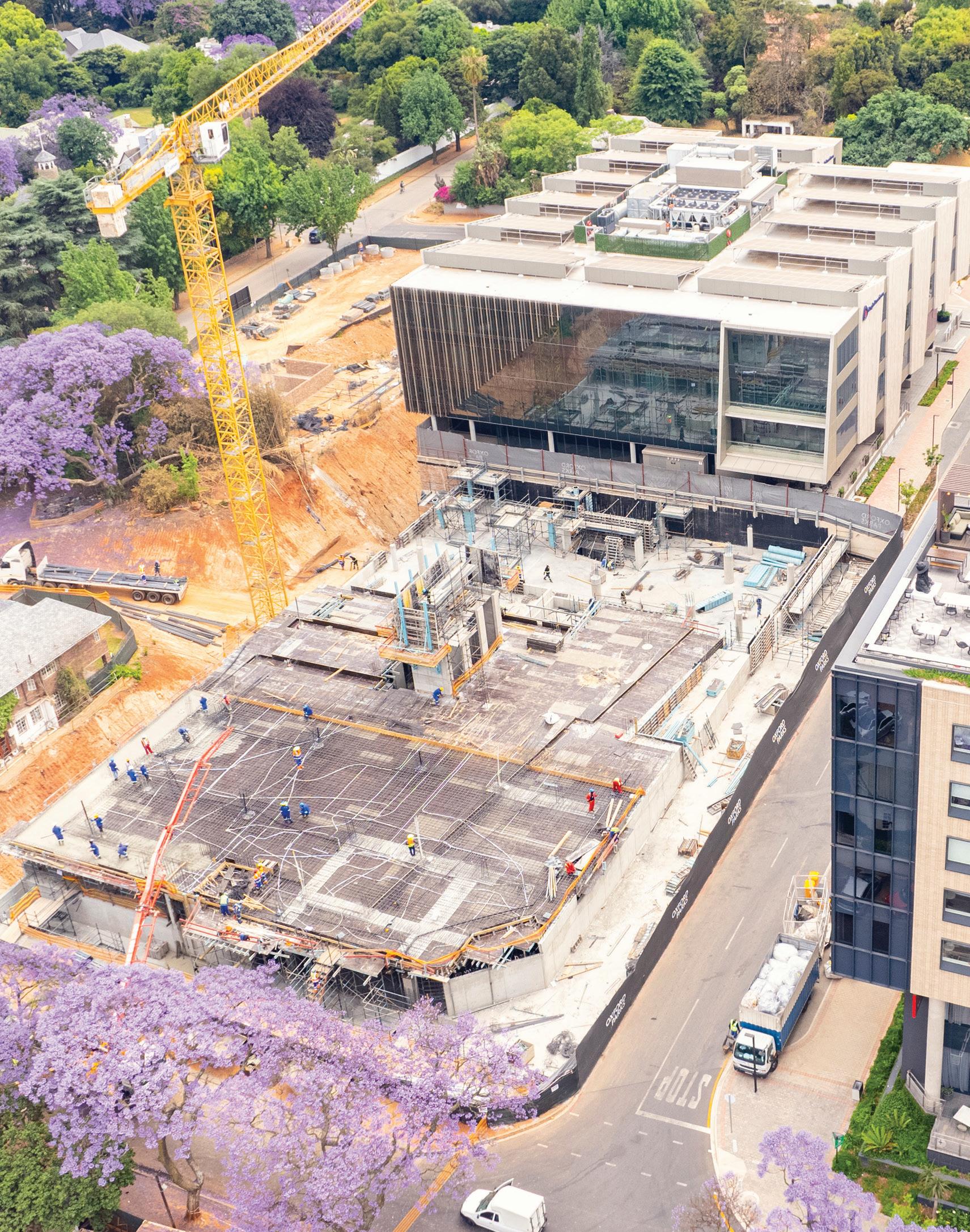
SOUTH AFRICAN BUILDER MARCH 2023 36 PROJECTS
LOW CARBON CEMENT AT HEART OF GREEN CERTIFICATION
After beginning construction this July, Concor is well on track to topping out another elegant office block in the Oxford Parks precinct, using environmentally responsible ready-mix with a low CO2 footprint from AfriSam.
The modern 5 Parks Boulevard building is one of Intraprop’s latest projects in this fast-growing mixeduse development in Rosebank, Johannesburg. Such has been Concor’s success that the building is its seventh contract there.
“Like our previous Oxford Parks projects, this building is designed to achieve a high Green Star rating by the Green Buildings Council SA,” says Martin Muller, contract manager at Concor.
SCOPE OF WORK
The office block will comprise four basement levels and five office levels, offering about 7 300m² of gross leasable area. The design includes a triple-volume atrium in the reception area to make the most of natural light and reduce energy. This feature extends from the ground floor through to the second floor. Further utilising the natural light is a double-volume area on the third and fourth floors.
“The structure’s based on conventional reinforced concrete slabs from the basements to the roof, with a lift core to accommodate three lifts down to the lowest basement,” says Muller. “As the bulk concrete supplier, AfriSam’s providing 150-250m3 of ready-mix concrete for each slab.”


He highlights that, as a Green Star-rated building, the concrete mix designs are required to reduce the overall CO2 footprint of the structure. This has been achieved by using more fly-ash in the mixes, thereby reducing cement levels by 30%. He notes that the quality and consistency of AfriSam’s mixes have allowed Concor to reduce the cycle time of each slab pour from the normal 11 days to nine or 10 days.
THE ART OF FAST-TRACKING
“On a fast-track project like this one, the mixes enable us to speed up our cycle times, as we can de-stress the slab and recycle formwork to the next level more quickly,” he explains.
Quality assurance on the concrete is done both by AfriSam and Concor. After every concrete slab pour, concrete cubes are cast. They are then crushed to test their strength after seven days, 14 days and 28 days. While 25MPa strength concrete is used for the slabs, higher strengths from 35-60MPa are used for the columns and verticals.
The anchor tenant plans to occupy the third and fourth levels of 5 Parks Boulevard.
MARCH 2023 SOUTH AFRICAN BUILDER 37
(Left): One tower crane facilitates the quick pace of construction.
(Above): About 80 piles are being constructed for the project.
(Top): With its advanced concrete technology and extensive R&D, AfriSam is one of the leading ready-mix suppliers in the industry.
TWO HILLBROW ICONS
Augy Da Costa’s journey as a property developer spans 15 years and includes successfully refurbishing two buildings in one of the most densely crowded suburbs in Gauteng – Hillbrow. Originally a mechanical engineer, with the aid of TUHF, Da Costa found success by refurbishing previously run-down spaces into vibrant hubs for retail and residential tenants.

HOLLYWOOD HEIGHTS
The transformation of the first of his ventures, Hollywood Heights on the corner of Pretoria and Claim Streets, began when he purchased the ramshackle building in 2005. The first addition was a bakery spanning 850m², which performed well. From 2009-2012,
Hollywood Heights received a new lease on life when Da Costa, with a loan from TUHF, refurbished the building, converting its existing office space into 196 residential apartments.
Today, there are 14 studio apartments, 56 bachelor apartments, 84 one-bedroomed and 42 two-bedroomed apartments. Each unit is affordable, with rentals ranging from R2 800-R5 800. Hollywood Heights also caters to a variety of retail tenants, including
McDonald’s, African Bank, Capitec, Nedbank, Western Union/Travelex, Hollywood Bets, a barber shop, Cyber Café and a coin-operated laundromat.
The building has a unique feature that lends itself further to constructing a new family – a school of its own. ‘’The school has eight classrooms and caters for Grades 00-R, with its own secure playground which the children of tenants can use under supervision,” he explains.
CUMBERLAND COURT
Five years later, Da Costa followed Hollywood Heights with another
SOUTH AFRICAN BUILDER MARCH 2023 38 PROJECTS
(Right): Augy Da Costa, pictured outside Cumberland Court, Hillbrow, Johannesburg.
building which he and TUHF revitalised – Cumberland Court, on the corner of Pretoria and Klein Streets. This residential complex underwent a significant refurbishment, involving some apartments being converted into two bedrooms and the construction of an eight-storey tower that could accommodate eight additional one-bedroomed apartments. Cumberland Court now contains 54 one-bedroomed apartments and six two-bedroomed apartments, along with one bachelor’s apartment. Rentals cost R4 750 for a one-bedroomed unit and R5 900 for a two-bedroomed one.
As refurbishing the buildings was capital-intensive, Da Costa credits his partnership with TUHF for making it possible. “The ‘Big Five’ banks’ loan period was eight years, whereas TUHF offered a 15-year loan, which certainly helped with my cash flow,” he explains.
SAFETY, SECURITY AND AMENITIES
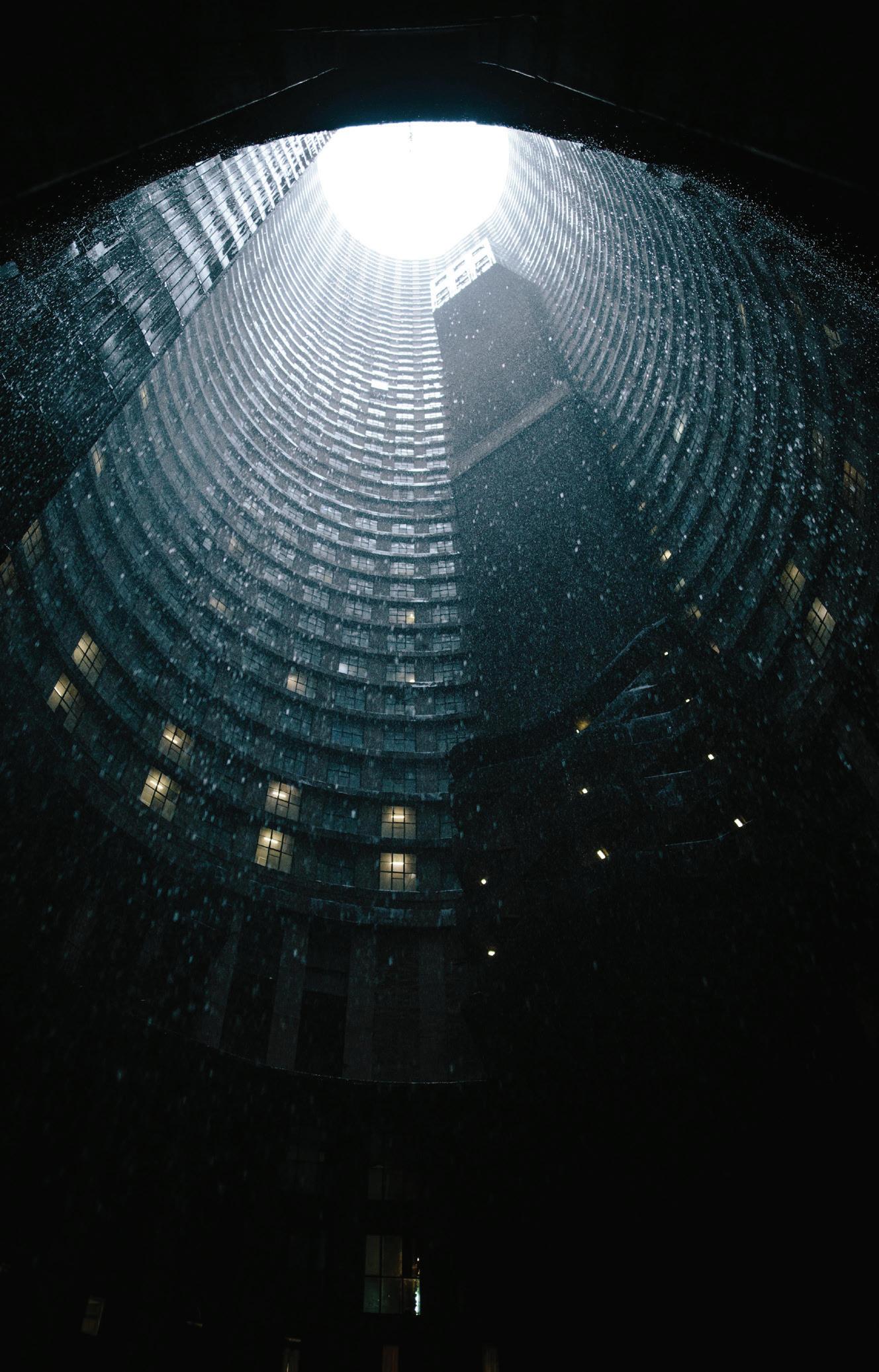
Contributing to the success of both properties is their close proximity to public transport, the city centre and accessible wifi for a flat monthly fee. Residents can also bring their own DStv decoders and use the existing infrastructure. Both buildings are served by comprehensive security, with Hollywood Heights watched by 10 security guards

MARCH 2023 SOUTH AFRICAN BUILDER 39
(Left): The ongoing renewal of Johannesburg’s inner and outer enclaves is rejuvenating its unique urban lifestyle, with rooftops doubling as social venues a common sight.
(Above): The iconic Ponte Tower ensures Hillbrow is kept in the popular imagination as a symbol of the famous and infamous suburb.
“CONTRIBUTING TO THE SUCCESS OF BOTH PROPERTIES IS THEIR CLOSE PROXIMITY TO PUBLIC TRANSPORT, THE CITY CENTRE AND ACCESSIBLE WIFI FOR A FLAT MONTHLY FEE.”
PROJECTS
and 160 surveillance cameras and Cumberland Court served by three security guards and 50 cameras. Additionally, all units have intercoms and the buildings feature biometric access.
Both Hollywood Heights and Cumberland Court cater to a wide range of tenants, from students and single, young professionals to new families. Many of the tenants work in the food and restaurant industry. Easy access to restaurants and a Super Spar also makes it an attractive place for families and single people to call home.
CHALLENGES AND OPPORTUNITIES
As with all projects, there were challenges to overcome. “Up until April of 2020, when the pandemic began, I hadn’t known the meaning of the word ‘vacant’. I’d never had any vacancy whatsoever for all those years,” says Da Costa.
While Covid-19 changed that for a while, today both buildings have largely recovered, with Hollywood Heights and Cumberland Court currently having a 96% and 98% occupancy rate respectively. This is a notable achievement, as one of the major challenges

property-owners have faced –which was amplified during the peak of the coronavirus – has been the devastating impact of high unemployment and its knock-on effect on occupancy rates, as people struggle to make ends meet. For Da Costa, the difficult economy has caused him to put his plans for his next developments on hold until the economy improves.
Those next plans (again with the aid of TUHF) are to continue refurbishing properties in Hillbrow – a market he now understands very well.
SOUTH AFRICAN BUILDER MARCH 2023 40
(Below): Cumberland Court boasts a variety of tenants and is a true mixeduse environment.
WHY SUSTAINABLE BUILDING MATTERS
In the current economic climate, many consumers are becoming more risk-averse and careful about where they spend their money. Trends show that sustainable brands are preferred over the rest.
SUSTAINABILITY GOES BEYOND GREEN
Contrary to popular belief, a sustainable brand is one that has successfully integrated environmental, economic and social issues. It is not just about being green. In fact, most companies that people think of as being sustainable only fufil onethird of the requirements. Being a truly sustainable brand, such as Swartland, involves manufacturing sustainable products in a sustainable way, as well as integrating sustainable economic and social pillars into the business operations.
SUSTAINABLE MANUFACTURING
Sustainability requires thinking in terms of the cradle-to-grave theory, rather than simply focusing on the end product. It is also important to consider whether
the product is manufactured from sustainable materials in an ecologically beneficial manner. For example, Swartland’s windows are SANS 613-certified and compliant. They have all been tested for deflection, structural strength, water-resistance, air-tightness, operating forces and the best possible energy-efficiency. More than that, they are made from sustainable materials, including timber sourced from sustainable FSC- and FLEGT-certified mills, or aluminium that is 100% recyclable.
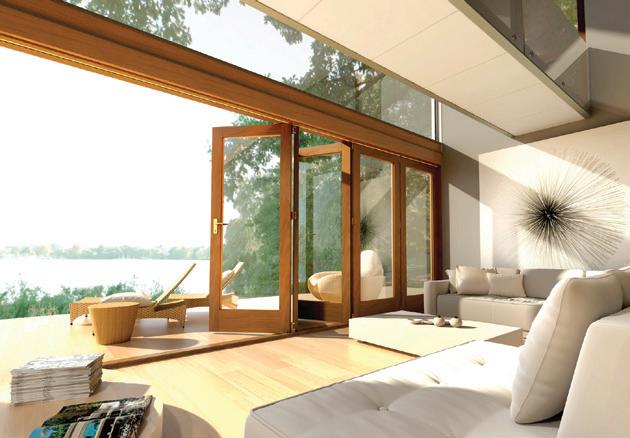
Swartland also manufactures its windows in a sustainable manner – the best wood cuts are used to create the finest windows and doors. Other grade cuts are used for wood laminate products, while the timber which is not used in production is utilised as fuel for the boilers that kiln-dry it. Any leftover shavings or sawdust are sold on to local farmers for chicken bedding. ”Virtually nothing is wasted,” says Cobus Lourens, the company’s national sales manager: Ready 2 Fit.
Swartland’s products are also manufactured to last a long time, thus minimising their overall carbon footprint. “Whether it’s windows, doors, timber mouldings or insulation, all our offerings provide best-in-class quality and longevity,” he adds.

ETHICAL BUSINESS PRACTICES AND PRO-SOCIAL BEHAVIOURS
Sustainability is also about ethical practices and dealings. In Swartland’s many years of operating in an environmentally responsible and sustainable way, it has found that cutting costs in the present becomes less important than the real cost in the future to both communities and the environment, says Lourens.

MARCH 2023 SOUTH AFRICAN BUILDER 41 SPONSORED EDITORIAL
“SUSTAINABILITY REQUIRES THINKING IN TERMS OF THE CRADLE-TO-GRAVE THEORY, RATHER THAN SIMPLY FOCUSING ON THE END PRODUCT.”
ASSOCIATION PARTNER
A SIGNIFICANT STEP IN THE RIGHT DIRECTION
By Erika van Zyl, national communications manager: ECA (SA)
According to the Electrical Installation Regulations (EIR), as contained in the OHS Act, only registered electricians may do certain work: inspecting installations and issuing Certificates of Compliance (CoCs), such as for purposes of transfer when a property has been sold; undertaking maintenance and alterations; installing solar PV systems; erecting electric fence systems; issuing new CoCs when geysers are replaced and connecting generators to the main supply, to name a few.
In the wrong hands, electricity is dangerous, particularly if the work is done on the infrastructure – the power network – which can impact other units in the estate. It is simple: obey the law and only use an electrical contractor who can prove that they are registered –ideally an ECA member, who also has the back-up of an association which has been around for nearly 75 years. Duly qualified and registered ECA members are listed in the “Find a member” section on the ECA’s website.
COVER
While reputable electrical contractors have public liability insurance cover as a matter of course, it is unlikely that unregistered electricians have that kind of protection. Work done by ECA members in good standing is also covered by a

Workmanship Guarantee to the value of R20 000.
SOLAR PV
There is more to compliance than just making sure that the electrician is registered; owners, managers and bodies corporate must also ascertain whether an electrician is qualified to undertake the work they have been employed to do. Some work, such as solar PV installations, may only be done by an installation electrician or a master installation electrician, who will also issue a CoC for the PV system.
When any alterations have been done to an electrical installation, a supplementary CoC for the alteration must be issued.
GEYSERS
When a hot water cylinder (geyser) is replaced – usually as the result of an insurance claim – it must be remembered that this is an alteration to the installation and it is incumbent on the user to obtain a supplementary CoC for the new geyser.
GENERATORS
With load-shedding, many property- and business-owners are installing generators. In such cases, the electrical machinery regulations become applicable, along with the EIR. In short, when portable generators interface with fixed electrical installations, this must be done by a registered electrical contractor and a CoC issued. Failure to do so will invalidate any insurance claims in the event of fire or an accident.
FORCE FOR CHANGE
ELECTRIC FENCES
Only persons registered at DoEL as electric fence system installers may issue CoCs for electric fence systems. When there is maintenance work to be done on these fences, it is best to use an EFSI or an ECA member.
CERTIFICATES OF COMPLIANCE
Only registered electrical contractors may issue a CoC for a new installation or for an existing property for purposes of transfer.
The Association for Residential Communities, estate managers, trustees, bodies corporate, homeowners and sectional title-owners will soon be able to access the information they need to ensure compliance with the law and the safety of people, pets and property. A draft specification is being compiled by our technical and legal experts and, once complete and approved, it will also be shared on the ECA’s website in a downloadable format.
SOUTH AFRICAN BUILDER MARCH 2023 42
(Above): Insurance cover and human safety can be highly compromised if it is found at a later stage that unqualified or non-accredited artisans were involved in an electrical installation .
Standard features include: happy clients.



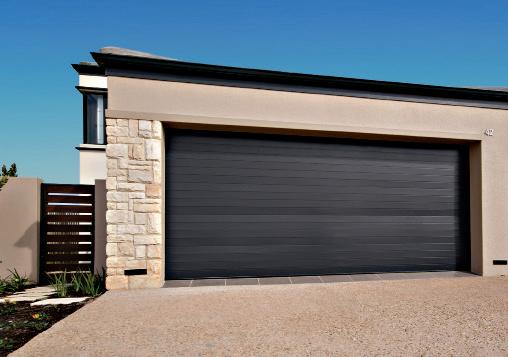



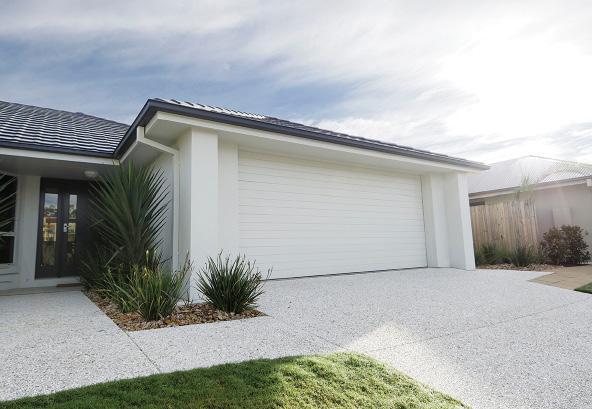
in a multitude of designs, our doors have one feature that comes standard: rock solid engineering. Made with high quality materials and components, our range of steel sectional and roll-up doors are strong, secure and durable.
Available
ARE CONTRACTORS READY FOR INCREASED SOLAR DEMAND?

Consumers are taking another serious look at solar energy after Eskom and the National Energy Regulator of SA recently announced an 18,65% tariff hike scheduled for April 2023, with another 12,47% increase on the horizon for 2024.
“A price increase of this magnitude amidst ongoing stage 6 loadshedding has considerably buckled consumers’ confidence in the
national energy provider. As grid deterioration outpaces repairs and consumers look cautiously to their shrinking wallets, the question becomes: can we afford not to make the change to solar?” asks Rein Snoeck Henkemans, MD of Alumo Energy.


NOT JUST FAILURE OF SUPPLY
The price of electricity has risen by 653% since the start of the energy crisis in 2007 – nearly three times greater than tariff hikes experienced in the two decades which preceded it. This comes even as increases in income per capita have stagnated in recent years.
Given these meteoric price hikes, consumers may soon find themselves choosing between paying their electricity bill or buying food, unless they take substantial steps or preventive measures, warns Snoeck Henkemans.
SOUTH AFRICAN BUILDER MARCH 2023 44 QUICK-BUILD
(Right): Rent-to-own options are taking the South African solar market by storm.
Price hikes and load-shedding are two of the more obvious drivers of residential solar power investment.
(Above): Rein Snoeck Henkemans, MD at Alumo Energy.
“Crucially, home-owners and small businesses don’t have to be forever beholden to Eskom, as alternative power generation solutions such as solar are becoming increasingly accessible and affordable,” he says.
SOLAR IS NOW LESS EXPENSIVE THAN ON-GRID ENERGY

Currently, the average household consumes about 30kWh of electricity per day, or roughly R3 000 per month. Under the new tariff, the same household could pay around R3 560 per month.
Under the 18,65% tariff increase, solar will be less expensive than grid energy and will help free households from ongoing loadshedding issues.
“Solar energy is SA’s most abundant natural resource. We
have the opportunity to get most households 80-90% off the grid, with the option of using grid energy on days with exceptionally low sunlight availability,” explains Snoeck Henkemans.
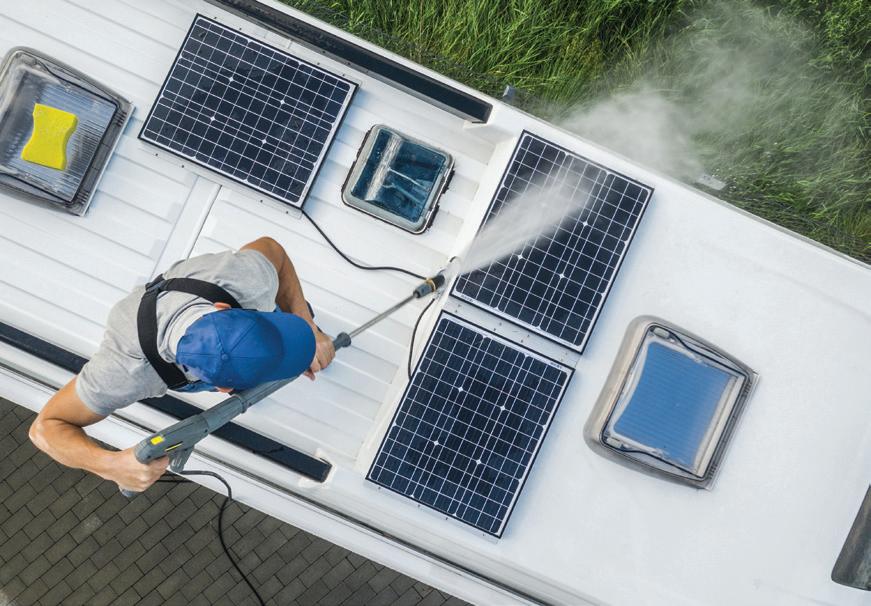
NEW SCHEMES OPEN NEW DOORS FOR MANY
Rent-to-own options also make solar considerably more affordable. Under Alumo’s Silver R2 844 per month rent-to-own solar scheme with a one-time R16 647 initiation fee, the average household could purchase a Sunsynk 5kW inverter, two Greenrich 5kWh batteries and 12 solar panels with a three-year workmanship guarantee for less than the monthly cost of Eskom electricity.
This system has the capacity to run two fridges or freezers, a computer,
two TV sets, two microwaves, 15 LED lights, a kettle and a CCTV system for six concurrent hours on a single charge.
UNDERSTANDING MULTIPLE SOLUTIONS
Each household has different energy needs, which means that each one requires a unique solar solution. To find out what solar system will work best for you, based on your current electricity bill, try Alumo’s easy-to-use solar calculator here.
“The simple fact is that, if financed through a home loan or purchased through a rent-tobuy option, solar’s less expensive than Eskom direct or municipalsupplied electricity. Technological advancements and widespread adoption have made solar more inexpensive and reliable than ever before, finally providing the average consumer with a viable and cost-effective alternative to grid energy,” says Snoeck Henkemans.
MARCH 2023 SOUTH AFRICAN BUILDER 45 QUICK-BUILD
“CURRENTLY, THE AVERAGE HOUSEHOLD CONSUMES ABOUT 30KWH OF ELECTRICITY PER DAY, OR ROUGHLY R3 000 PER MONTH. UNDER THE NEW TARIFF, THE SAME HOUSEHOLD COULD PAY AROUND R3 560 PER MONTH.”
(Above): Today, solar power systems come in such a variety of assemblies that they can be found almost anywhere.
(Left): From feeding power back into the grid to electric vehicle charging stations, our relationship with electricity is being revolutionised.
THE INVISIBLE HOUSE THAT POPS UP EVERYWHERE
Producers Chris Hanley and Roberta Hanley are known for their innovative film projects, including cult hit American Psycho and Sofia Coppola’s directorial début, The Virgin Suicides
So when the time came for the couple to design a house, they wanted something on the cutting edge.
The Hanleys partnered with architect Tomas Orsinski, a Frank Gehry collaborator, to design their Invisible House. The home has now been listed for sale at $18 million.
SOLARCOOL
Heat-reflecting Solarcool glass gives the home its unique look and keeps the interiors temperate, despite the harsh desert weather,

by filtering out harmful UV rays. The sprawling property reflects the surrounding desert scenery.
An eco-friendly foam roof and solar-electric system make the house a model of sustainability.
The glass walls open on three sides for a novel take on the indooroutdoor living concept. Inside, a 30m heated indoor swimming pool is capped by a 21m² projection wall perfect for screening films.
STAR OF NATURE AND SCREEN
The home’s three large bedrooms each have their own en-suite bathroom with Boffi fixtures. The primary suite is currently equipped with a giant glass bed frame and features a five-star resort-inspired
bath with a soaking tub, floating vanities and a rain shower.
Situated on 27ha of desert, the home provides seclusion and oneness with nature.
With cameos in numerous film projects and more extensive coverage on Netflix’s The World’s Most Amazing Vacation Rentals, the home has been available as both a film location and a luxury Airbnb stay with a per-night price of $2 500 (about R44 600).
The listing is held by Aaron Kirman and Matt Adamo of AKG | Christie’s International Real Estate.
SOUTH AFRICAN BUILDER MARCH 2023 46 GLOBAL VIEW
(Above): This home in Joshua Tree, California, USA, is a 511m² mirrored box which was inspired by the science fiction classic 2001: A Space Odyssey.
MBA REGIONAL LISTING AND AFFILIATE MEMBERS




Master Builders Association
Boland
Contact: Daniel Uys
E-mail: info@mbaboland.org.za
Tel: 021 863 3330
Master Builders Association
East Cape
Contact: Greg Steele
E-mail: ecmba@global.co.za
Tel: 041 365 1835
Master Builders Association
Free State
Contact: Stephan Claassen
E-mail: admin@mbafs.co.za
Tel: 057 352 6269
Master Builders Association
North
Contact: Mohau Mphomela
E-mail: info@mbanorth.co.za
Tel: 011 805 6611
Master Builders Association
KwaZulu-Natal
Contact: Vikashnee Harbhajan
E-mail: info@masterbuilders.co.za
Tel: 031 266 7070
Master Builders Association
Greater Boland
Contact: Duane Phillips
E-mail: info@mbagreaterboland.org.za
Tel: 023 342 6964
Master Builders Association
Northern Cape
Contact: Graham Andrews
E-mail: info@mbanc.org.za
Tel: 053 832 1762
Master Builders Association



Western Cape
Contact: Roekeya Bardien
E-mail: info@mbawc.org.za

Tel: 021 685 2625
Association of Architectural Aluminium Manufacturers of SA

Contact: Johan Heyneke
E-mail: reception@aaamsa.co.za
Tel: 011 805 5002
SA Refrigeration and Air-Conditioning Contractors’ Association
Contact: Barney Richardson
E-mail: saracca@icon.co.za

Tel: 011 622 3890
CAPTAINS OF CONSTRUCTION
CAPTAINS OF CONSTRUCTION
Sven Schutte, director: All States Africa Concrete Equipment
Sven Schutte is an experienced construction manager with a demonstrated history of working in the construction industry. Skilled in cost management, project estimation, CPM scheduling and constructability, he is a strong operations professional who holds a BSc in construction management from the University of Cape Town.

Schutte is the South African representative of All States Concrete Equipment, a concrete equipment business established more than 30 years ago, and has now taken it from an agency to the fully operational company which is All States Africa Concrete Equipment. His work as a specialist contractor in concrete finishes in SA has given him an edge in the quality for cost he can provide to the local market.
The company offers a full range of concrete finishing equipment comprising concrete mixers, screeds, hand trowels, power trowels, concrete vibrators, buggies and more. The range encompasses everything one needs to get the job done.
MARCH 2023 SOUTH AFRICAN BUILDER 47
BRAND SUPPORTERS

debbie.harvey@za.afrisam.com 011 670 5941
ALL

www.allstatesafrica.co.za



accounts@allstatesafrica.co.za

010 109 3177
www.ecasa.co.za Erika.vanzyl@ecasa.co.za 011 392 0000.


SOUTH AFRICAN BUILDER MARCH 2023 48
SUPPORTERS
BRAND
AFRISAM www.afrisam.co.za
STATES AFRICA
CONTRACTOR ASSOCIATION OF SOUTH AFRICA (ECASA)
A DIVISION OF MASTER BUILDERS SOUTH AFRICA (MBSA) www.masterbuilders.org.za info@masterbuilders.org.za 011 205 9000 MODERN DESIGN. MADE THE OLD-FASHIONED WAY. At Swartland, we only know one way to make doors and windows, and that’s to last. Our Kenzo range is built from strong, lightweight aluminium-alloy frames allowing for expansive walls of light, space and seamless integration with nature. Kenzo windows and doors require very little maintenance and never need to be painted – the perfect combination of durability and affordability. All products are SANS 613 certified and compliant. Call us on 086 110 2425 or visit www.swartland.co.za for more info. Kenzo_2022_297x210.indd 1 2022/02/25 15:55
INVESTMENTS
LTD
ELECTRICAL
SWARTLAND
(PTY)
www.swartland.co.za arno.geldenhuys@swartland.co.za 086 110 2425
ASSOCIATION
THE CLAY BRICK
www.claybrick.org.za mariana@claybrick.org.za 011 805 4206



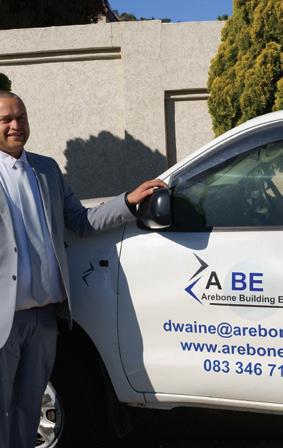


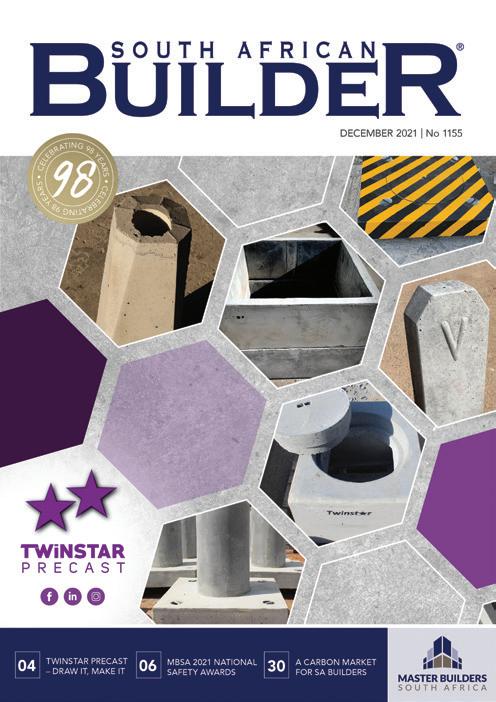


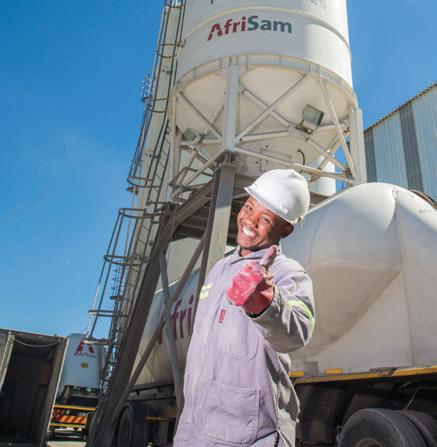

































































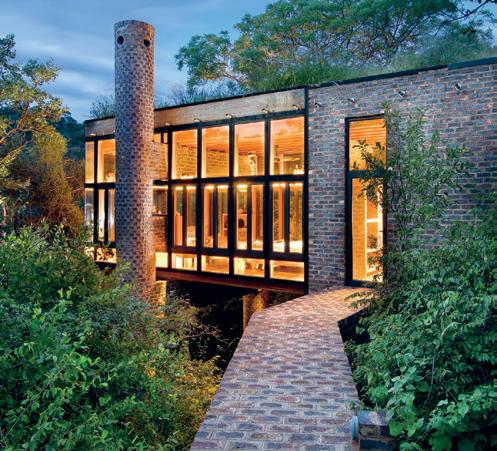
































Your brand is invited to join the MBSA as it celebrates South African Builder’s centenary in 2023. Book your centenary/congratulatory ads now and ensure you’re a part of this incredible milestone. Contact: Ruwayda Mahomed Office: +27 (011) 883 4627 Mobile: +27 (0)72 383 3203 AUTONOMOUS MACHINES 35 SAFETY FOR EXCAVATIONS 32 BRAT NG99YEA R EC RBE ENERGY THE ROADMAPSUSTAINABLE 34 PORTABLE TRAINING FOR SA’S UNEMPLOYED 28 SEPTEMBER 2022 No 1163 G 99YEAR ARBELEC MBA REGIONAL SAFETY AWARDS 2022 07 PLUMBING INDUSTRY TRANSFORMATION 18 GEOTECHNICAL ENGINEERING IN CONSTRUCTION 28 FRANKIE PAPPAS House of the Big Arch, Waterberg mountains Breath-takingbrickinspirationcomesfromtheHouse oftheBigArchbydesignfirmFrankiePappas.Locatedinanaturereserve,thehomeaimstofadeintoitsbackground,letting thelandscapetakecentrestage.Itwasconstructedusingglassandaluminium,butit’stheroughstockbrick,selectedtomatch thesurroundingsandstone,thatstealstheshow–proofthatstockbrickcanbeexceedinglybeautiful. frankiepappas.com 183 2022/03/24 10:42 OCTOBER 2022 No 1164 CELEBRAT 99YEAR TARBELE GN SRAEY99 OPTIMISM AT MBSA CONGRESSS 2022 10 FOCUS: TRANSPORT AND EQUIPMENT 34 SCAFFOLDING SAFETY 26 environment-friendly VE O H C Y K for good A R OV C E YB C R AND RENOVATIONS 2022 | No 1161 JULY AUGUST 2022 No 1162 CELEBRAT 99YEAR ITARBELEC RAEY99 POSITIVE TURNOUT FOR INDUSTRY TRADE SHOWS 26 CLIMATEPROOF ROADS 32 WE ARE OUR PEOPLE Leaders in Construction and Leaders in Transformation AVOIDING REPEATTYPE INJURIES 8











































































































































































































































































